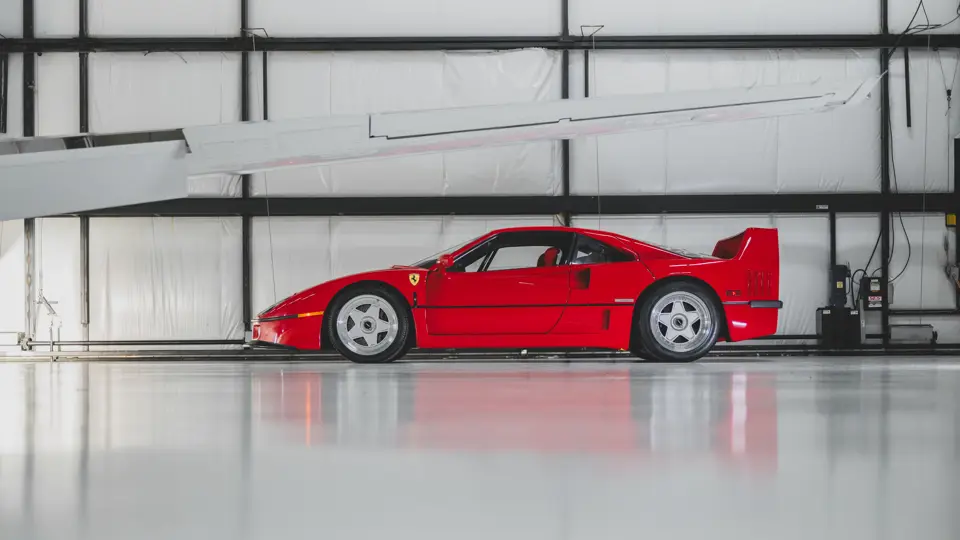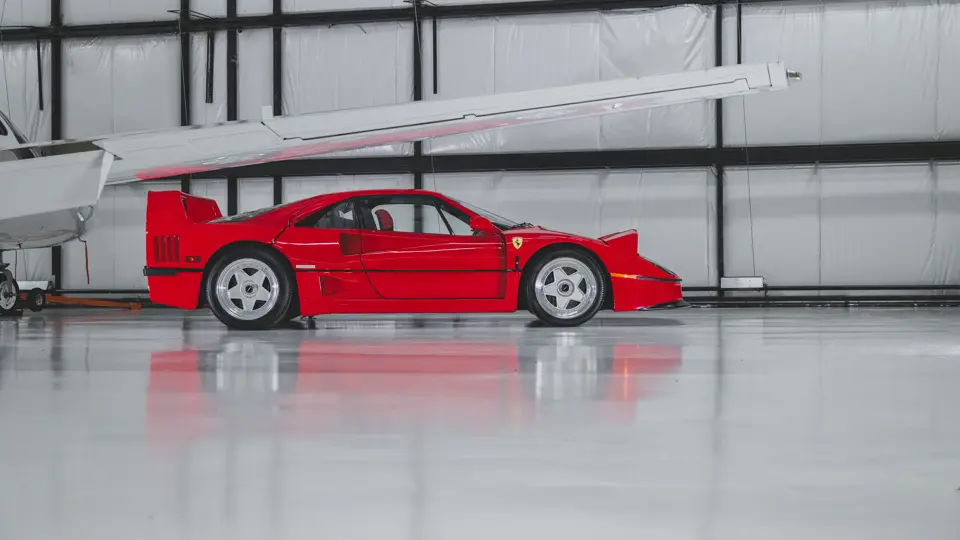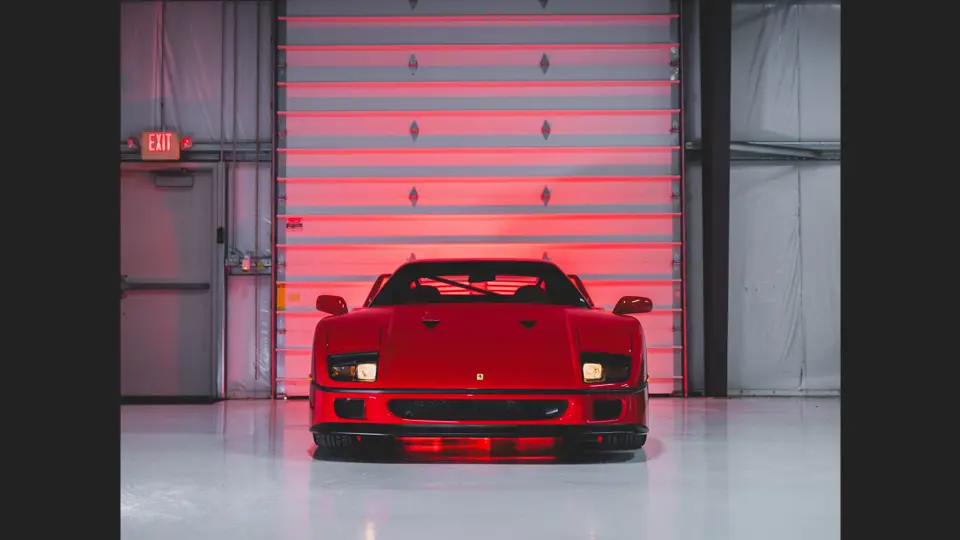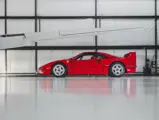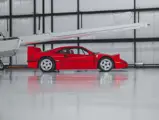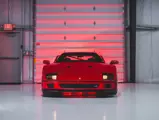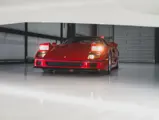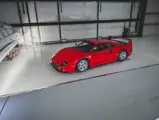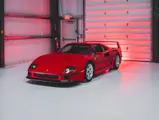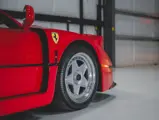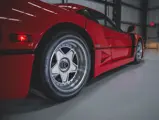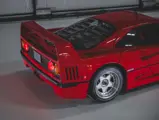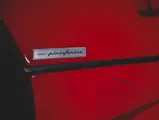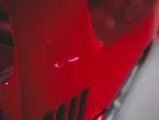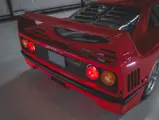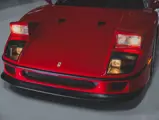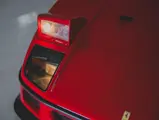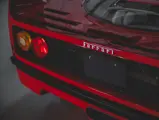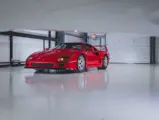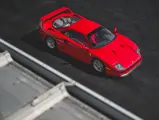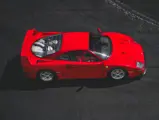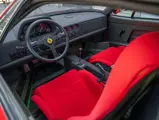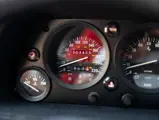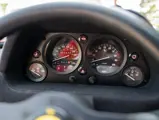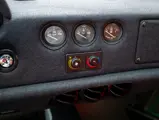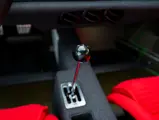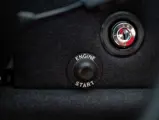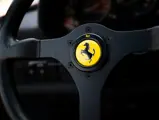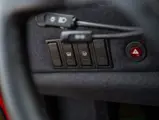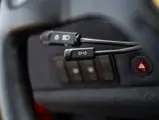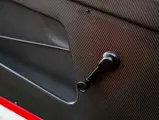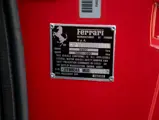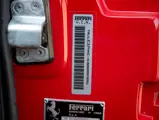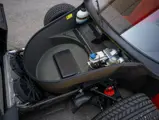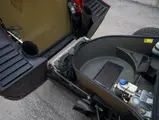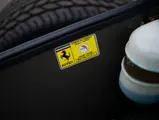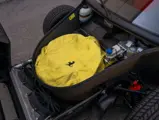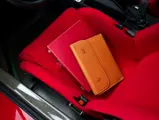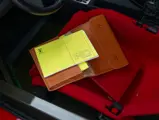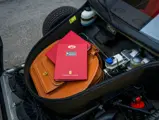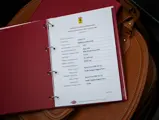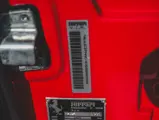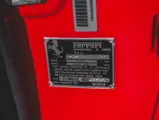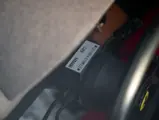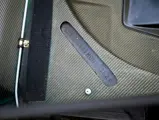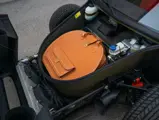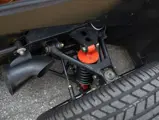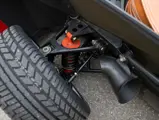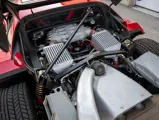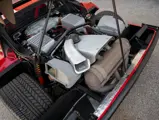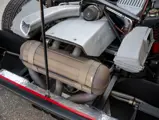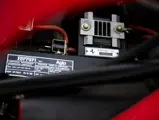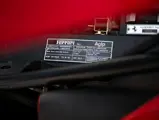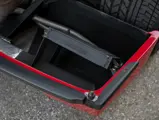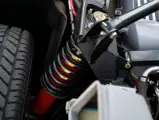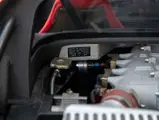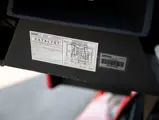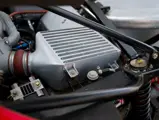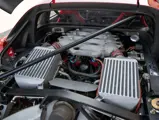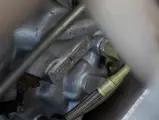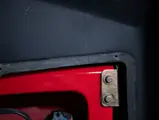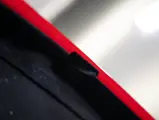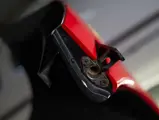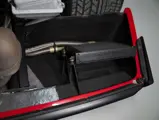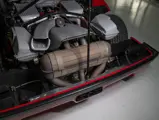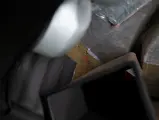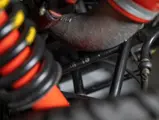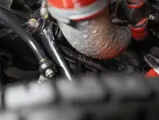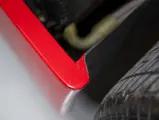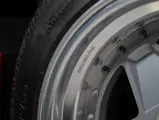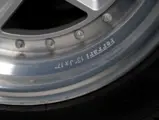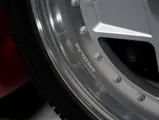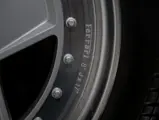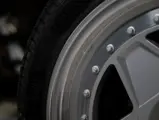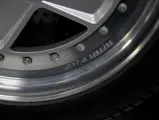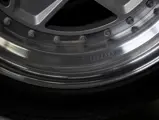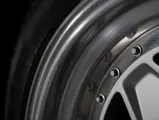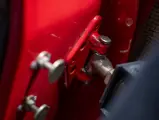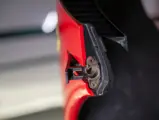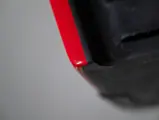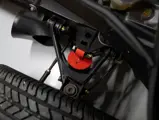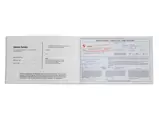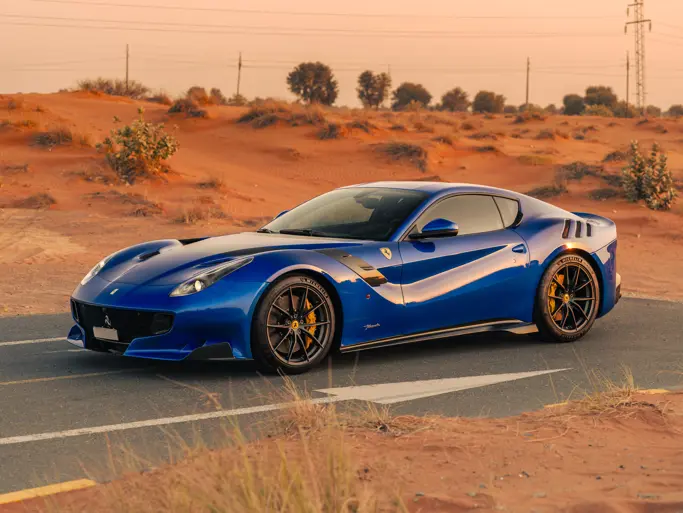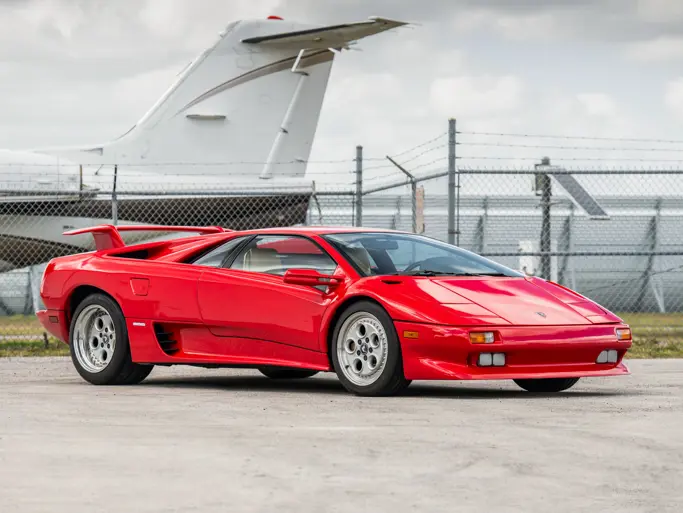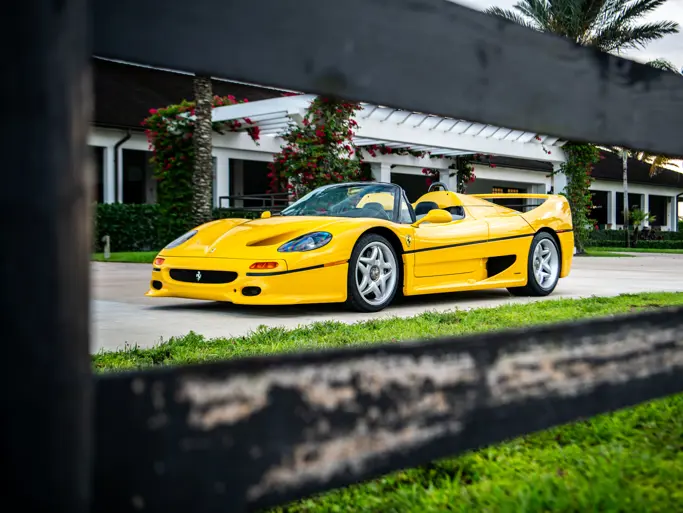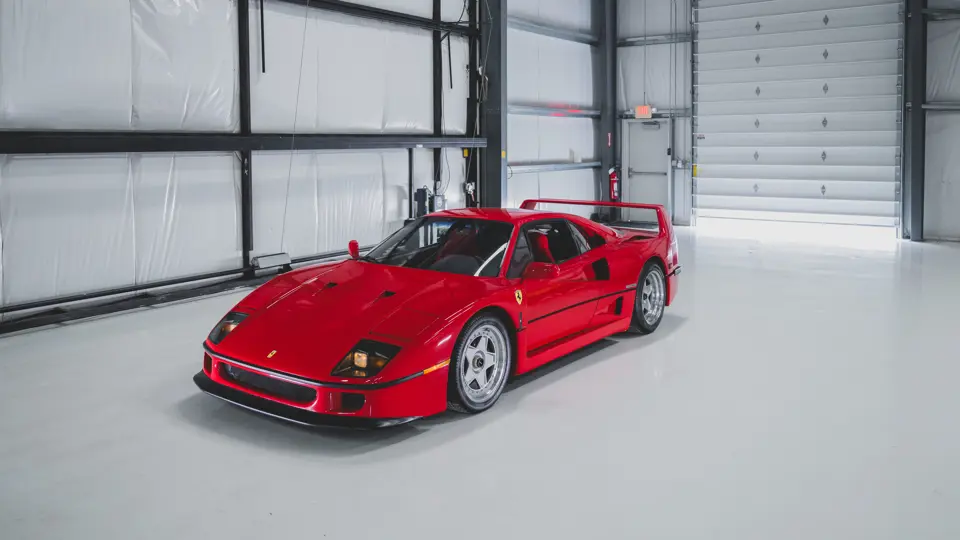
1991 Ferrari F40
{{lr.item.text}}
$3,580,000 USD | Sold
{{bidding.lot.reserveStatusFormatted}}
- One of 213 total examples specified for the US market; desirably equipped with non-adjustable suspension
- Certified in 2008 with a Ferrari Classiche Red Book authenticating the matching-numbers engine, transaxle, and body
- Benefits from minimal use during a short ownership chain; 3,435 mi. displayed on the odometer
- Offered with owner’s manuals in leather pouch, toolkit, and fitted luggage
- Documented with original warranty book, Ferrari Classiche Certificate of Authenticity, and history report by Marcel Massini
- Beautifully maintained and preserved, mildly driven, and remarkably original example of Maranello’s celebrated 40th-anniversary supercar
- Benchmark component of Ferrari’s seminal “Big Six” hypercars (288 GTO, F40, F50, Enzo, LaFerrari, F80)
A FERRARI TO END ALL FERRARIS
Created to celebrate the 40th anniversary of Maranello’s first model, the 125 S, the F40 sent a shockwave through the automotive establishment with its racing-specification drivetrain and aerodynamically advanced wedge shape. To this day the model remains one of Ferrari’s most captivating and impressively engineered supercars, continually inspiring new generations of enthusiasts.
As the F40 was originally conceived as a FIA Group B racecar, it was developed from the superlative 288 GTO to take on the likes of the Porsche 959. When the Group B class was canceled a short time later, Ferrari decided to use the five initial 288 GTO Evoluzione development cars as the basis for a new 40th-anniversary model, one that ultimately proved to be the last supercar devised under Enzo Ferrari’s stewardship.
As it was originally engineered for competition use, the F40 featured a race-developed steel tube-frame chassis with four-wheel double-wishbone independent suspension, coilover Koni shock absorbers, and four-caliper ventilated disc brakes. Pietro Camardella’s body design, executed under the direction of Leonardo Fioravanti and aerodynamically perfected in Pininfarina’s wind tunnel, was built with paneling woven from Kevlar and carbon fiber, reducing curb weight by approximately 20 percent while simultaneously tripling the car’s structural rigidity.
The 288’s twin-turbocharged V-8 was bored to displace 2.9 liters and equipped with IHI turbochargers and Behr intercoolers. The resulting type F120 040 engine initially developed 478 horsepower and 425 pound-feet of torque, impressive power figures for that era. Mated to a five-speed transaxle actuated by a gated shifter, the V-8 was capable of launching the low-weight F40 to 60 mph from a standstill in just 3.8 seconds and an official top speed of 201 mph.
Cosmetically, the F40 amply reflected its basis in racecar development, with the lightweight aerodynamically perfected body peppered with air-channeling NACA ducts. The spartan interior design was equally thoughtful, featuring weight-reducing elements such as pull-strap door releases, drilled pedals, Perspex windows, and cloth upholstery on plastic-composite racing seats.
Publicly introduced at the 1987 Frankfurt Motor Show, the F40 was initially earmarked for a low production run of 400 examples, but skyrocketing customer interest prompted Ferrari to ultimately build 1,315 cars. The commemorative supercar was initially only available in Europe, and early examples were built without catalytic converters or adjustable suspensions. In 1990, deliveries of a more developed version began in the United States, and these cars were standard equipped with air conditioning and catalytic converters, but without the oft-criticized adjustable suspension, making them more desirable by many enthusiasts’ reckoning.
By the conclusion of F40 production in mid-1992, just 213 examples had been built for the US market, lending them a particular rarity among total output. The F40 remains notable for being the last supercar developed under the watchful eyes of Il Commendatore himself, the legendary Enzo Ferrari; and given the model’s sinewy, purposeful likeness to an advanced dedicated racing machine, the connection seems entirely fitting.
CERTIFIED MATCHING-NUMBERS—ONE OF THE 213
Claiming a life of modest driving use and fastidious upkeep through a small handful of private ownerships, this fetching early F40 is a particularly desirable example. As one of the 213 cars specified for the United States, chassis number 89382 is equipped with the desirable non-adjustable suspension preferred by many enthusiasts. Fitted with wind-up windows and instruments in miles, the F40 was finished in the characteristic livery of Rosso Corsa paint over an interior trimmed in Stoffa Vigogna (cloth upholstery).
After being completed by the factory in June 1991, the F40 was distributed to Ferrari North America a month later and allocated to the dealership Wide World of Cars in Spring Valley, New York. As clarified by the car’s warranty book, in early August the Ferrari was delivered to its first owner, Fredric Mack of New York City. Carfax data suggests the car remained in New York for at least 12 years, as it was regularly serviced by Wide World of Cars in the early 2000s.
Circa 2005 the Ferrari was acquired by Brian Ross, the principal of the marque dealership Ferrari of Vancouver, and after initially remaining in Ohio the F40 was imported to British Columbia. Ferrari of Vancouver soon performed an engine-out service, and when a new clutch was installed in 2021 the car displayed approximately 3,400 miles. In January 2025 the F40 was reinspected and serviced at Ferrari of Ontario in preparation for its current offering, ensuring this Maranello hypercar is performing as intended and ready for road use.
The owner also shepherded the F40 through the factory certification process, culminating in the January 2008 issuance of a Ferrari Classiche Red Book that authenticates the continued presence of the matching-numbers engine, transaxle, and bodywork—clarifying that the car embodies the highest possible degree of authenticity.
It should be noted that gradual increases of mileage on the Carfax support the odometer’s desirably low figure of just 3,435 miles, reinforcing how little the car has been driven throughout its well-maintained life. RM Sotheby’s specialists have been highly impressed by 89382’s incredible degree of originality, concluding that the exterior has not been subject to any paintwork, and the factory-finish (i.e. unrestored) Speedline alloy wheels retain the proper markings. Accompanying owner’s manuals in the proper leather pouch, toolkit, and leather fitted luggage round out a remarkably original, beautifully presented, and complete example of the Ferrari masterpiece.
As a well-maintained, matching-numbers-certified, and minimally driven F40, chassis number 89382 would make a singular addition to any collection, be it supercar-focused or Ferrari-favored. Collectors searching for pristine, original, low-mileage examples from Maranello’s “Big Six” portfolio could hardly find a more impressive example of the groundbreaking F40 than this stellar car.
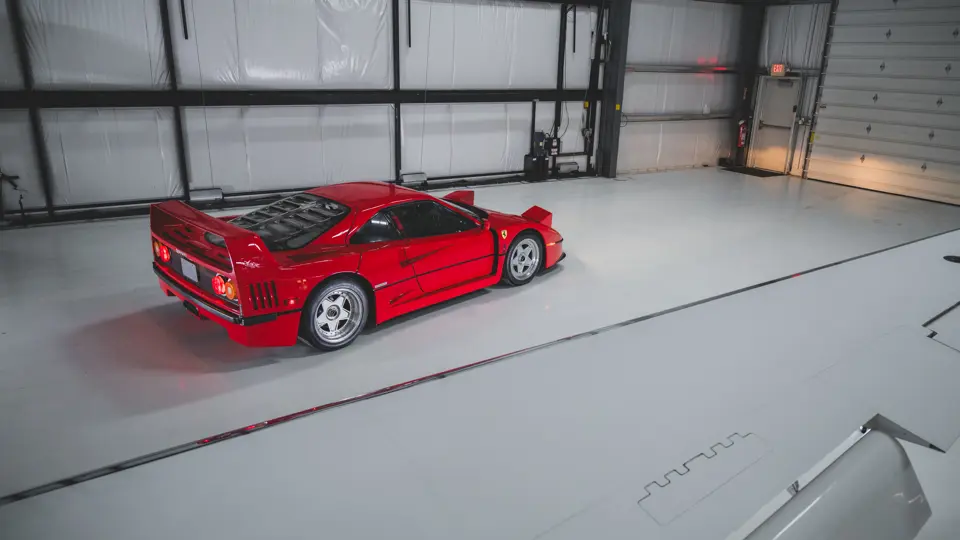



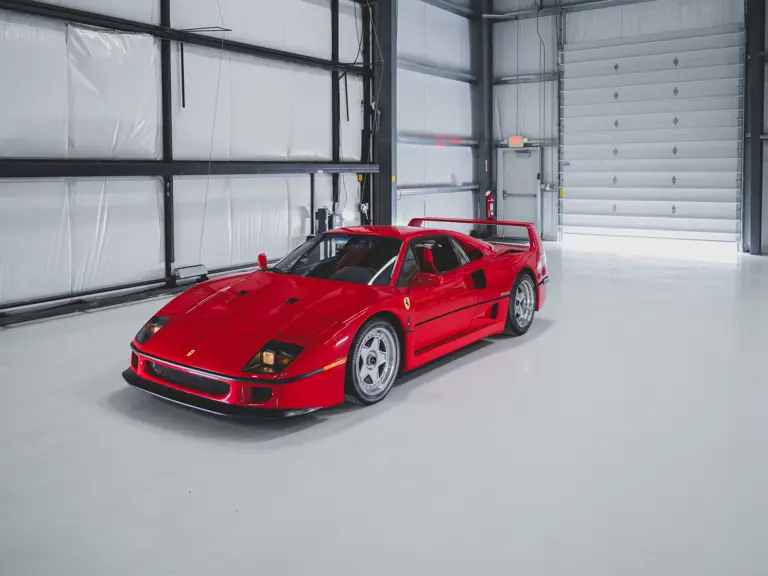
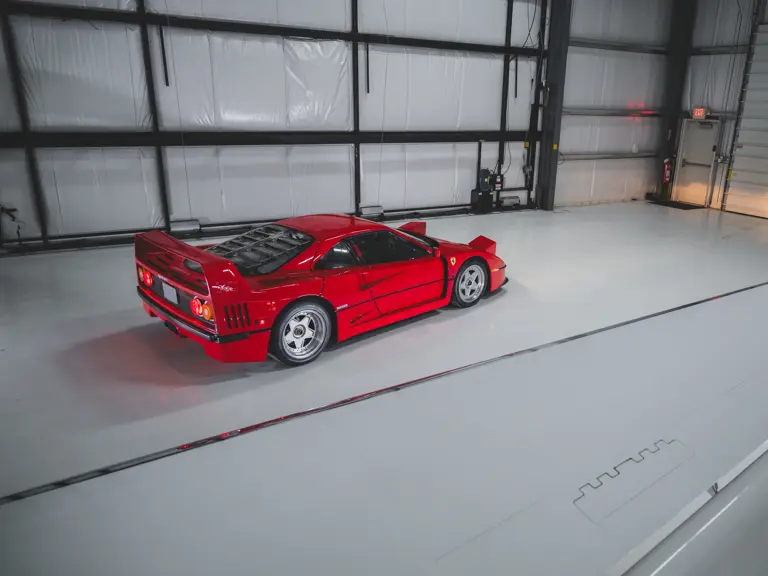
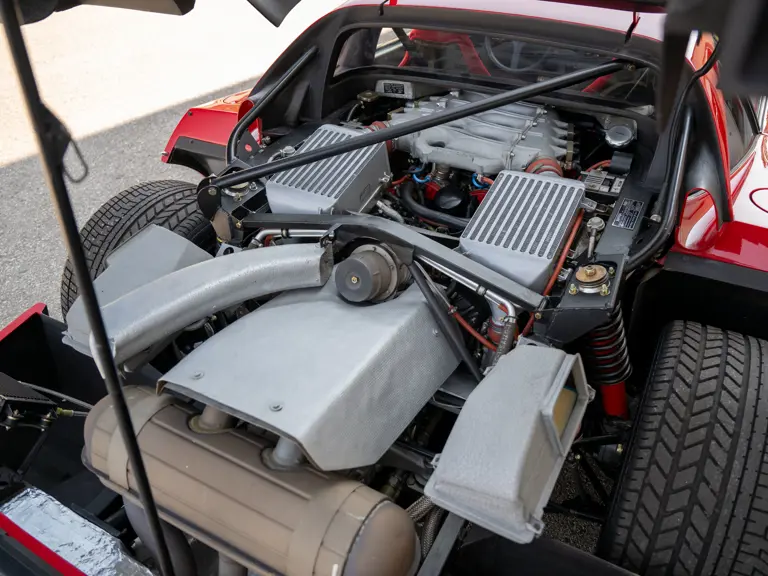
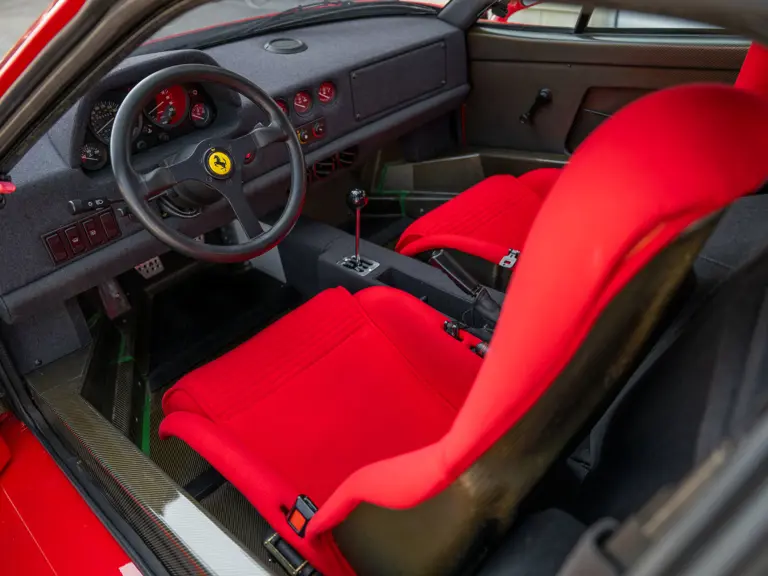
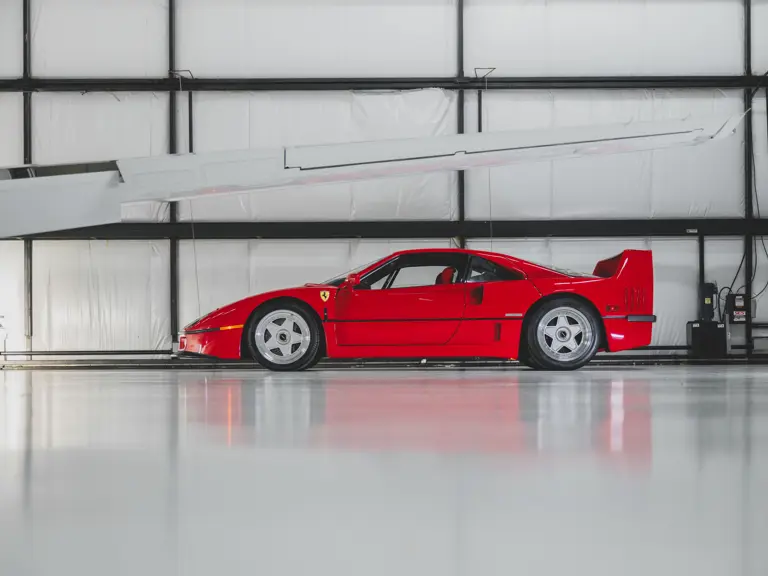
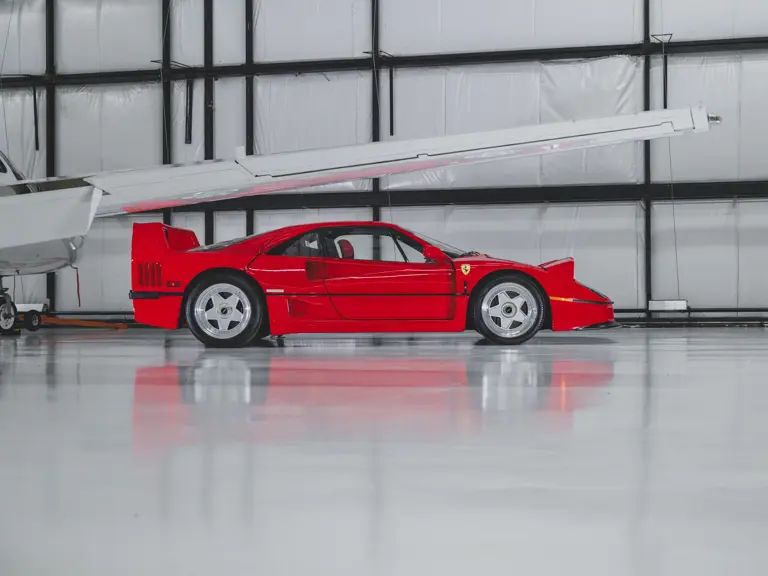
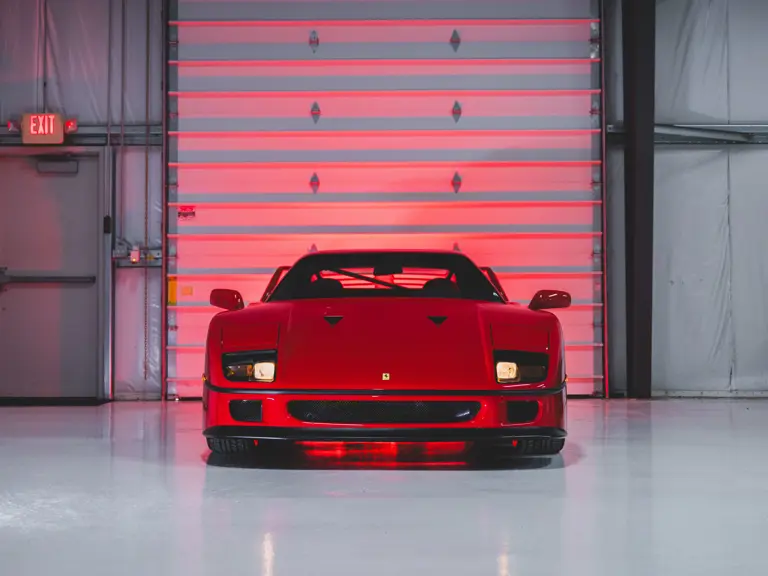
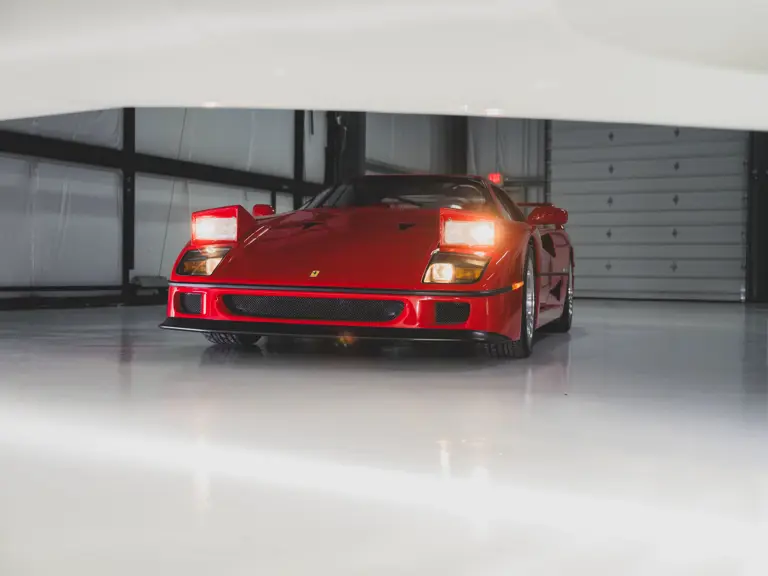
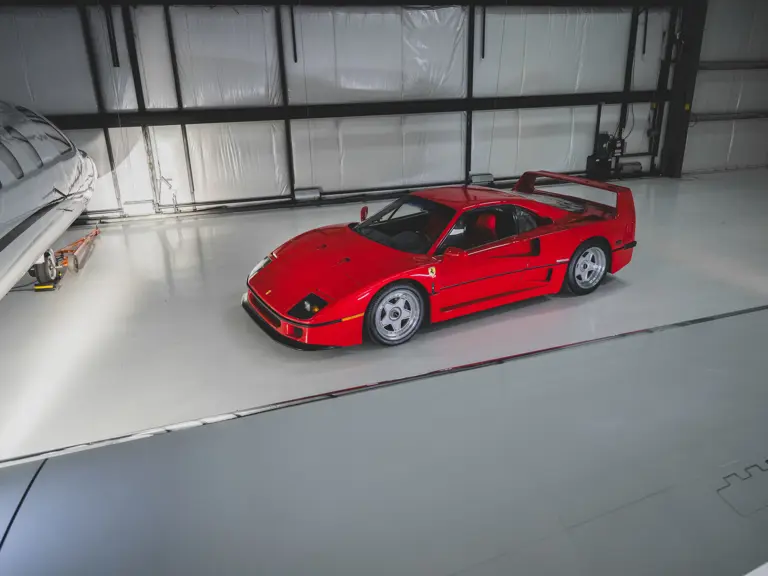

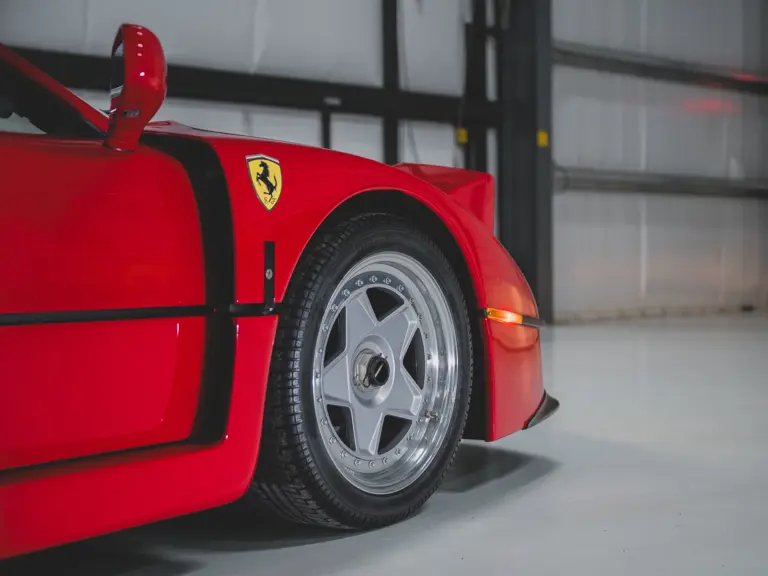

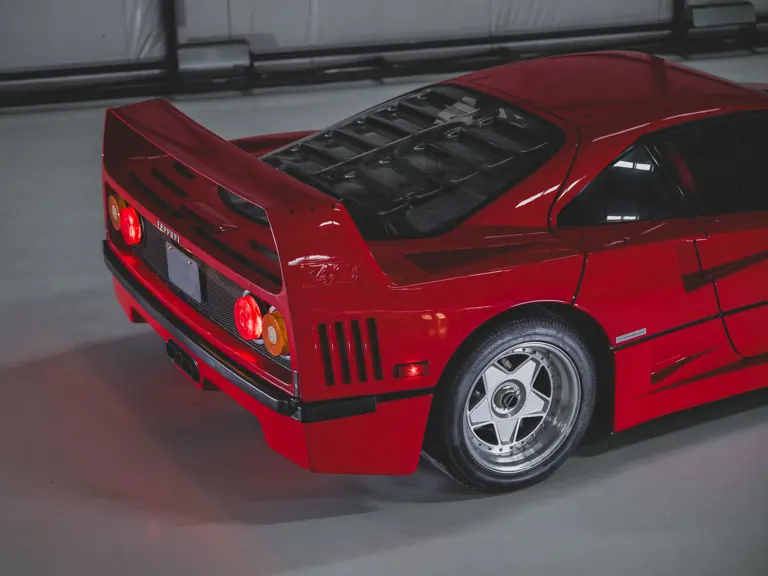
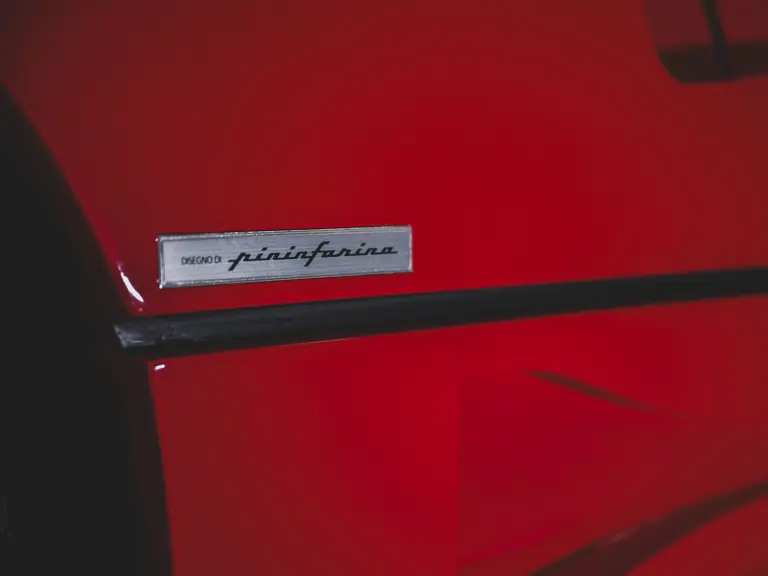
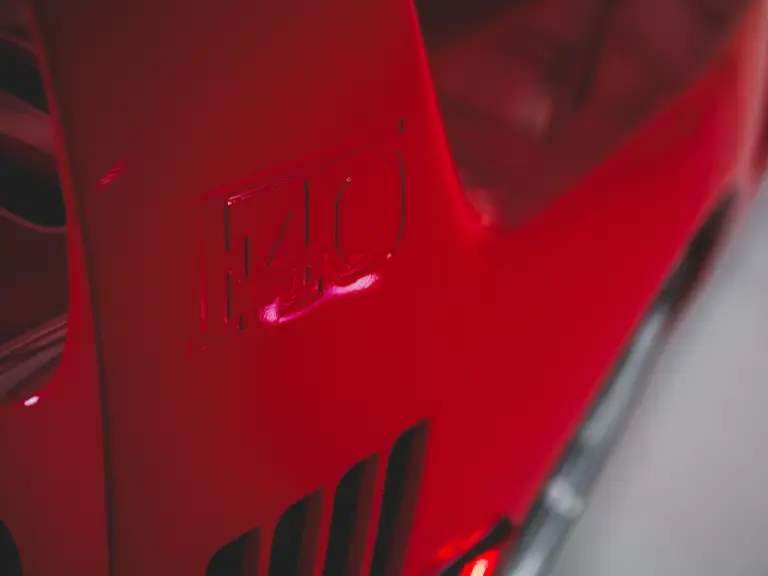
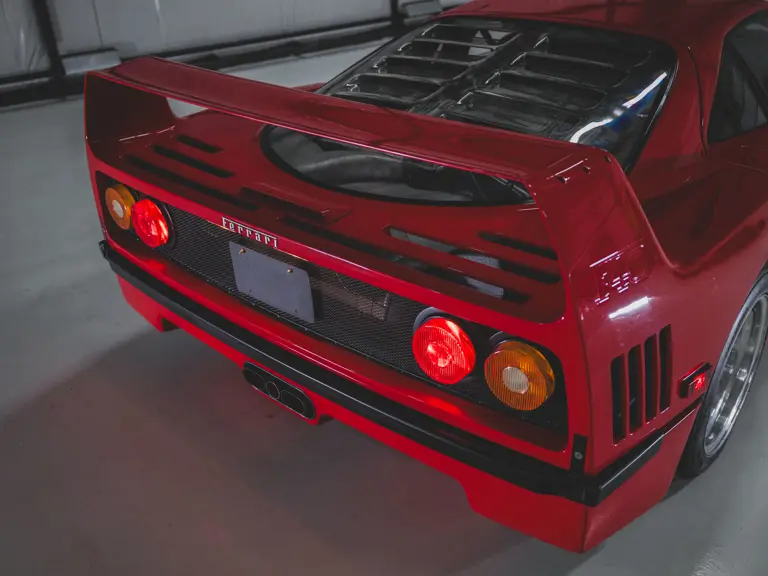
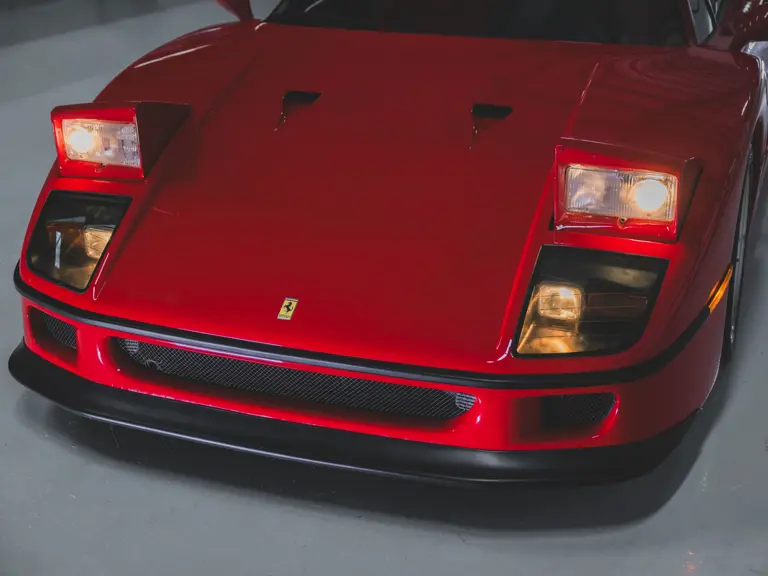
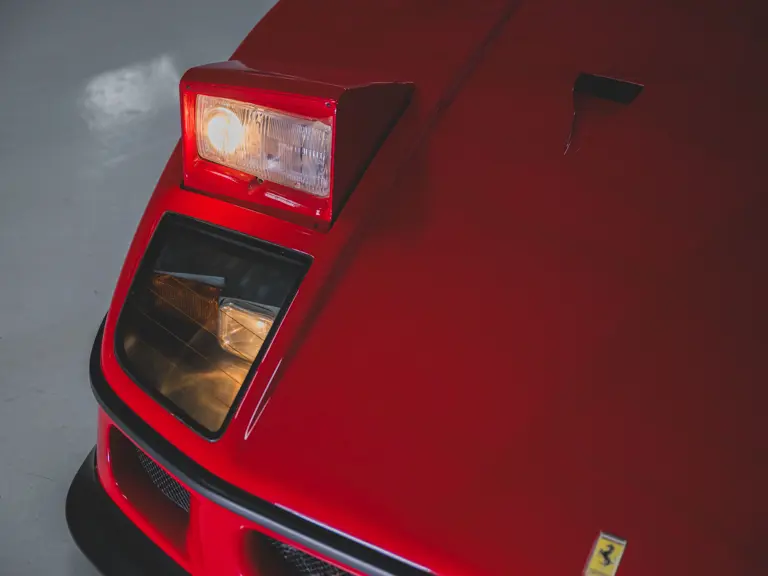
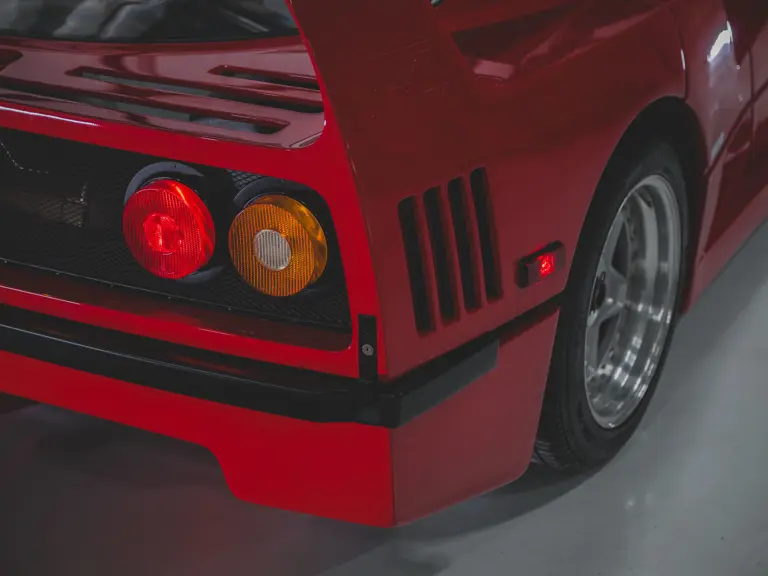
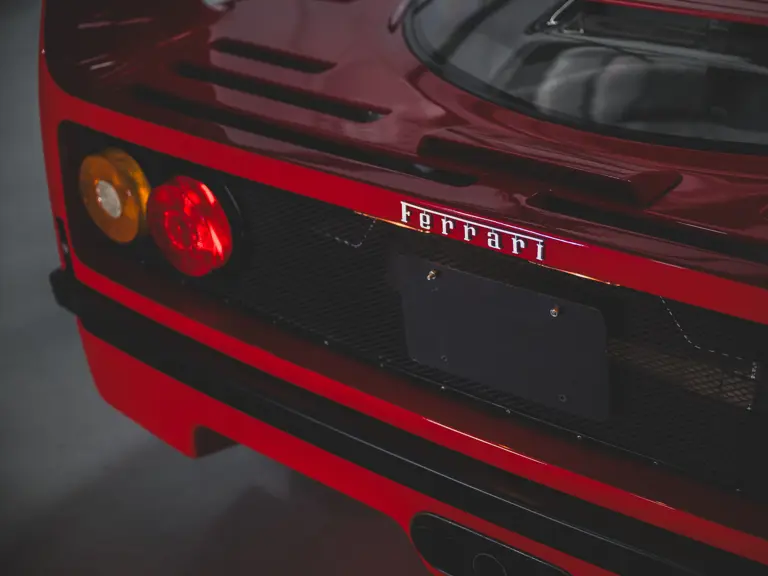
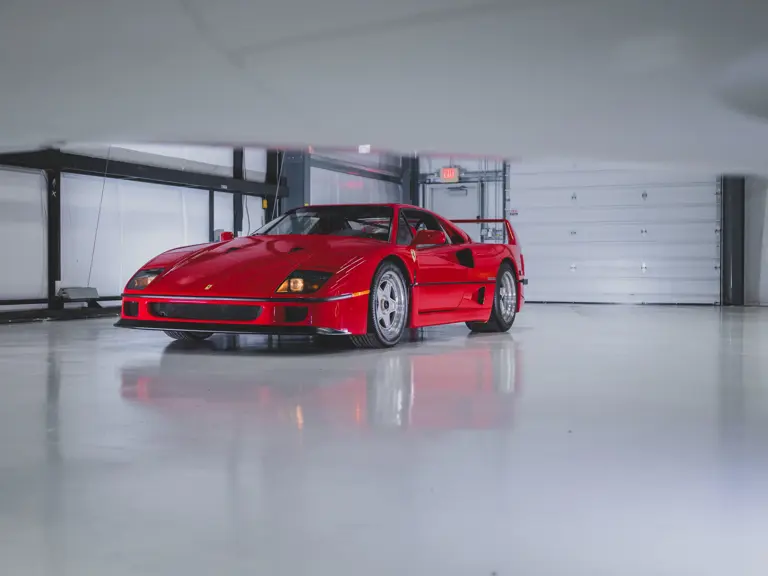
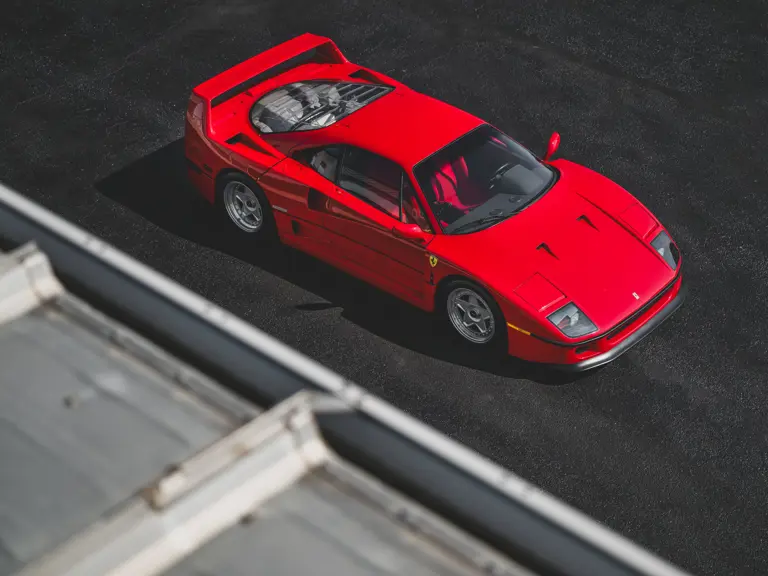
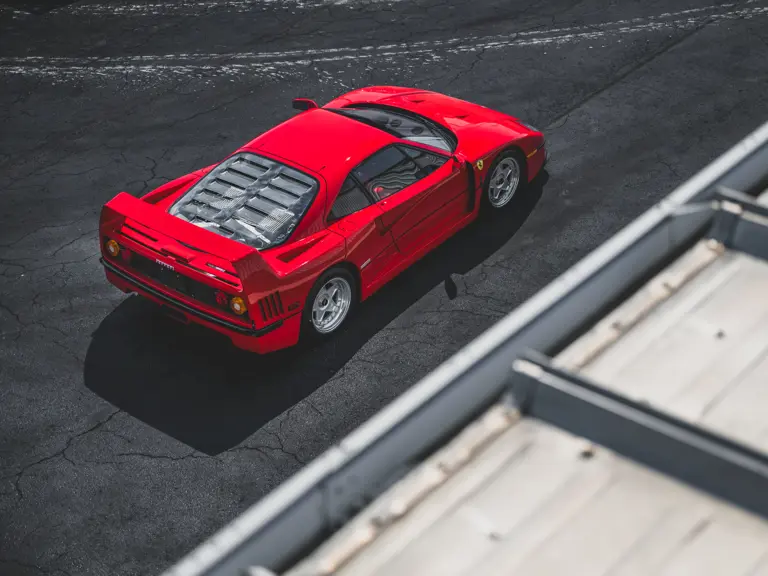
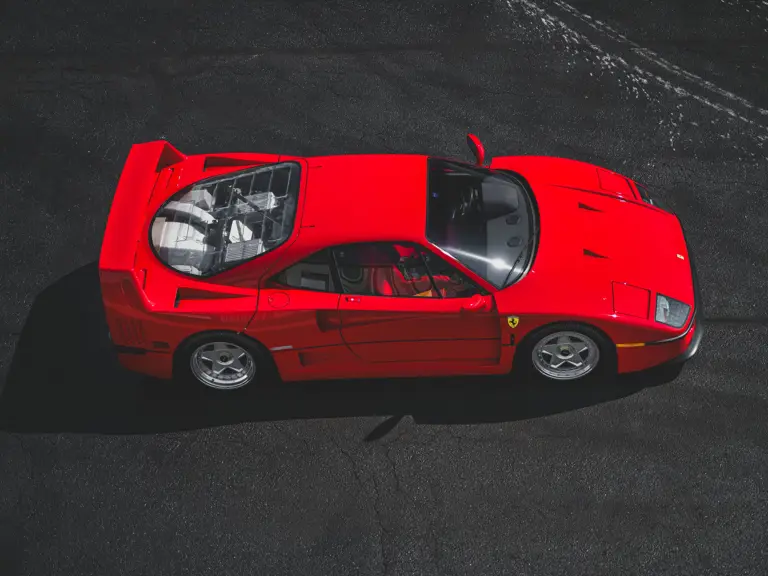
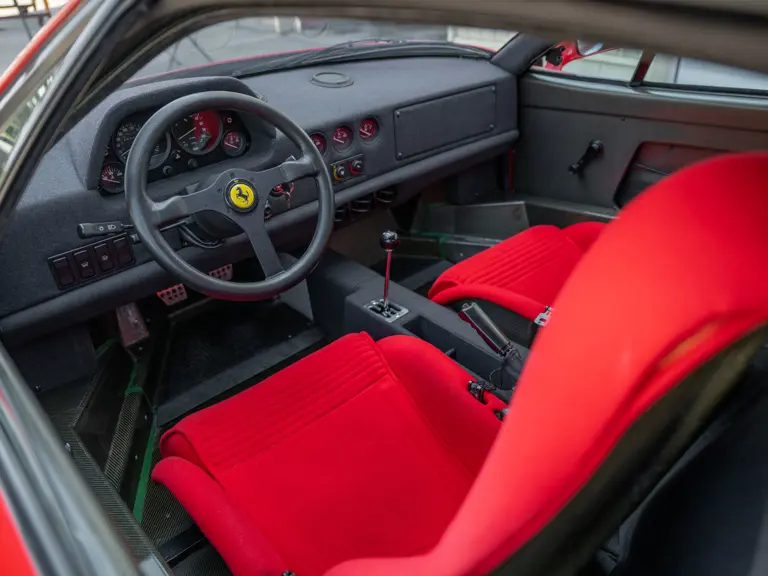
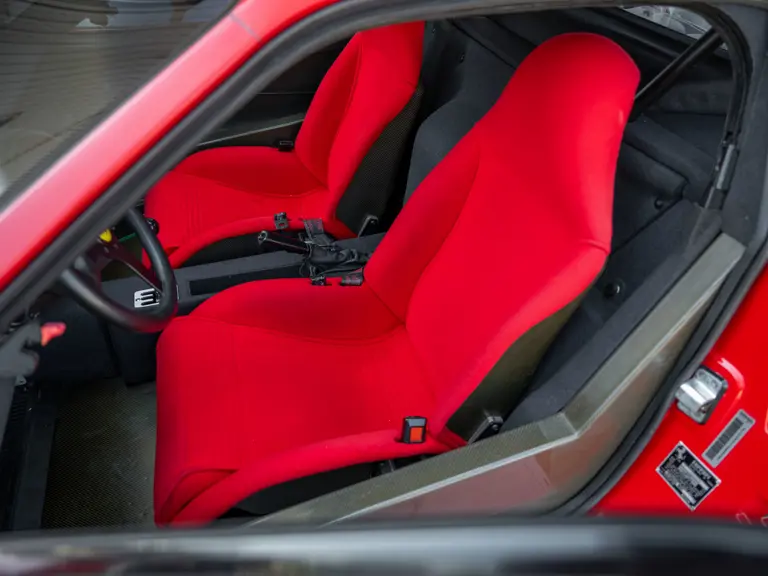
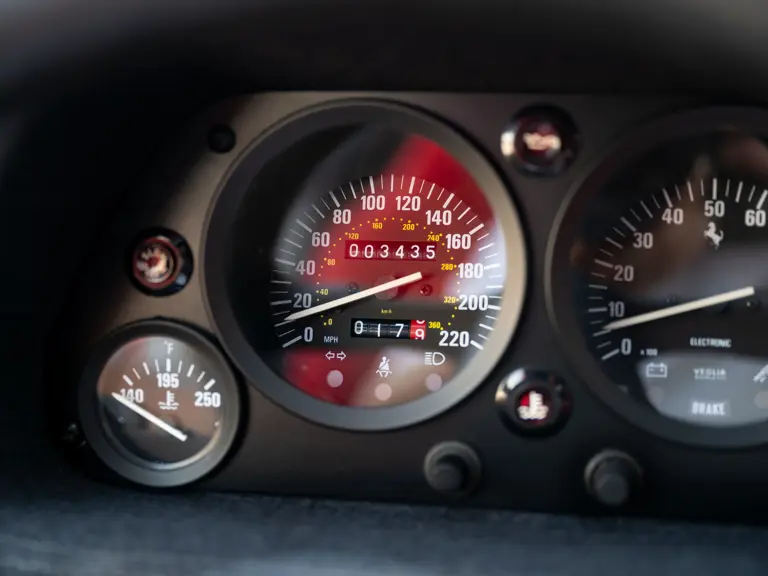
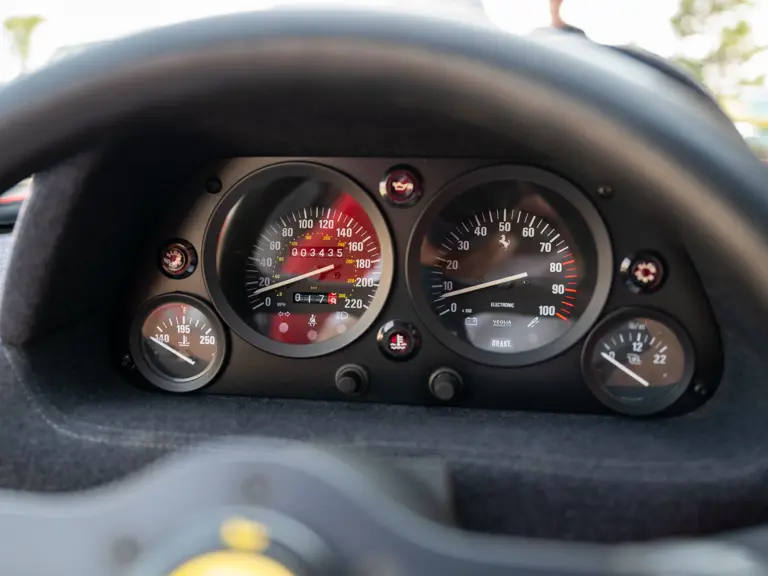
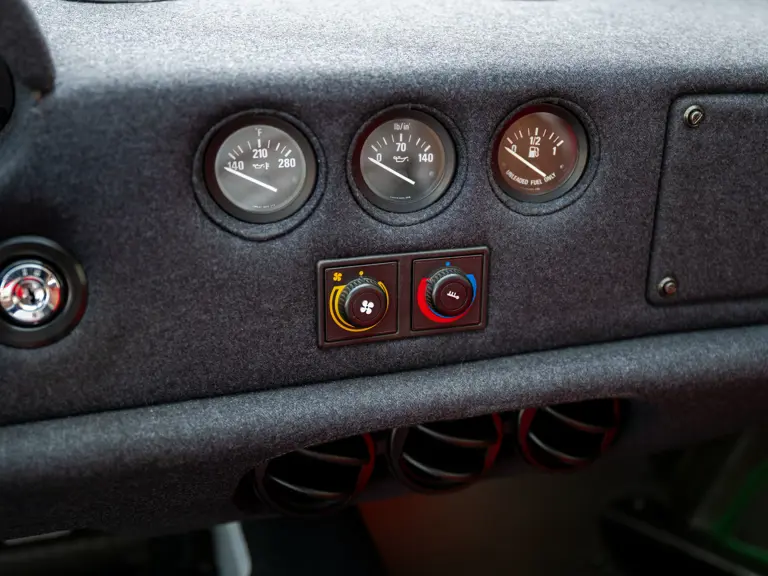
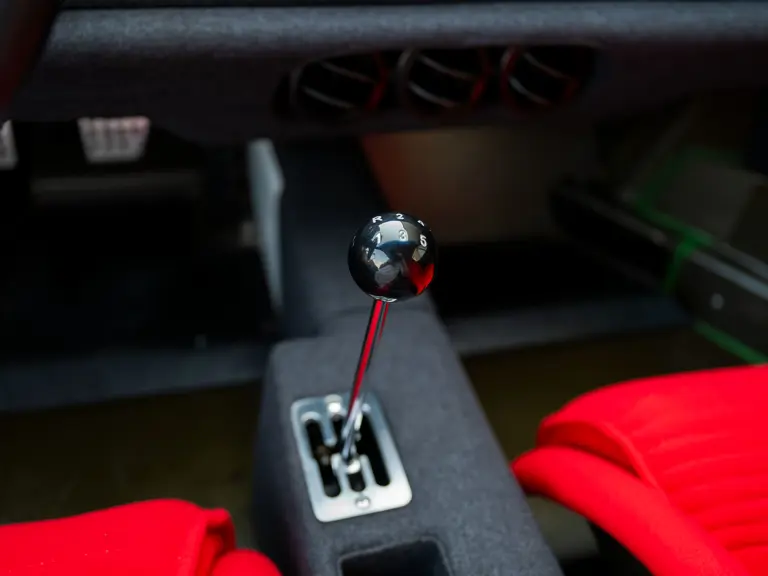
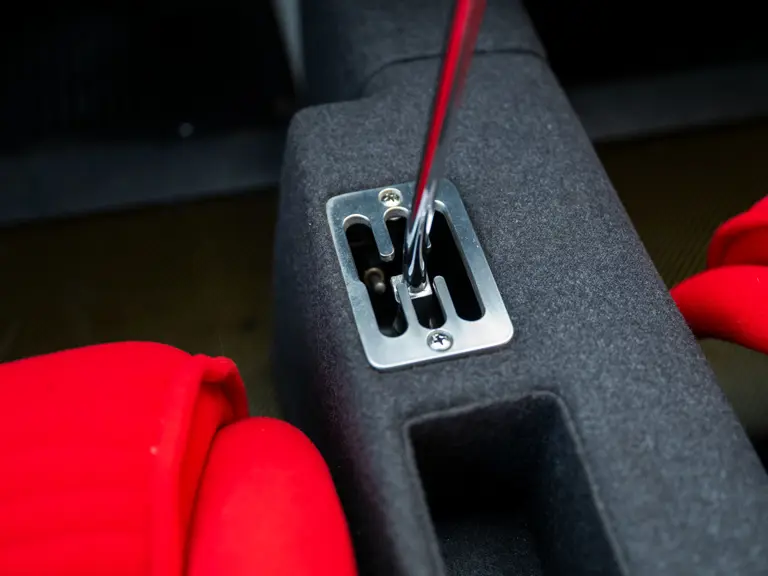

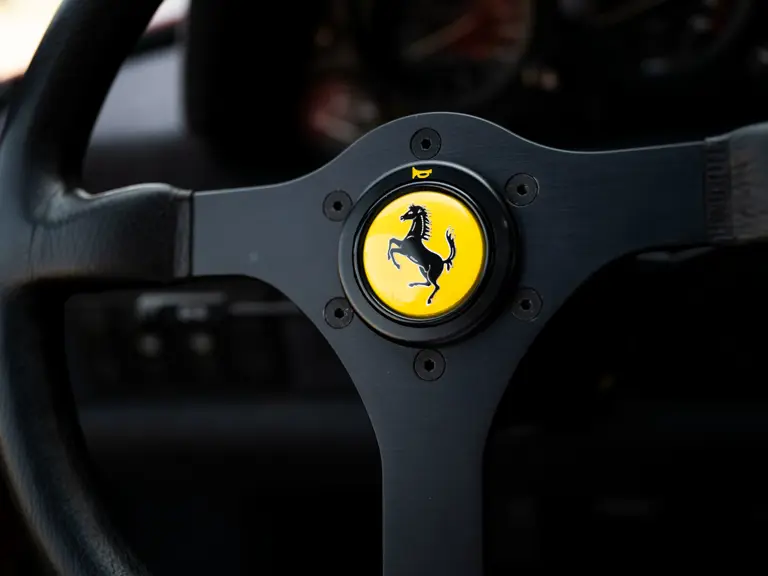

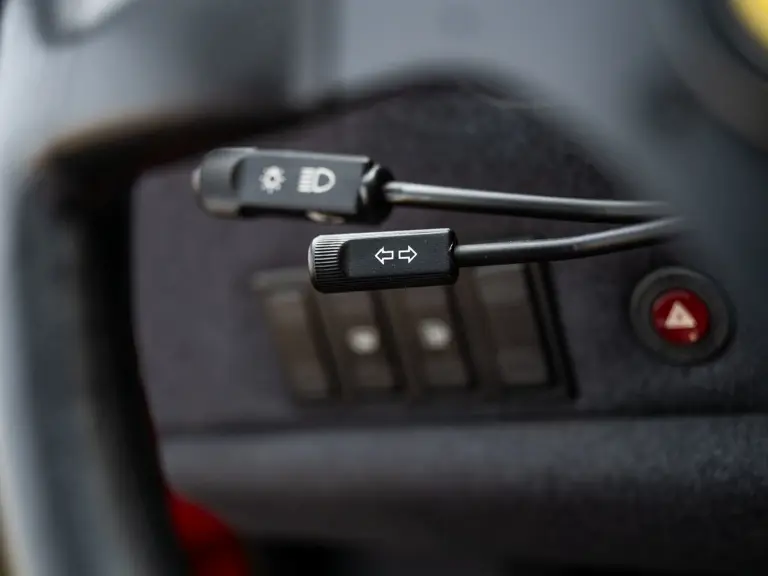
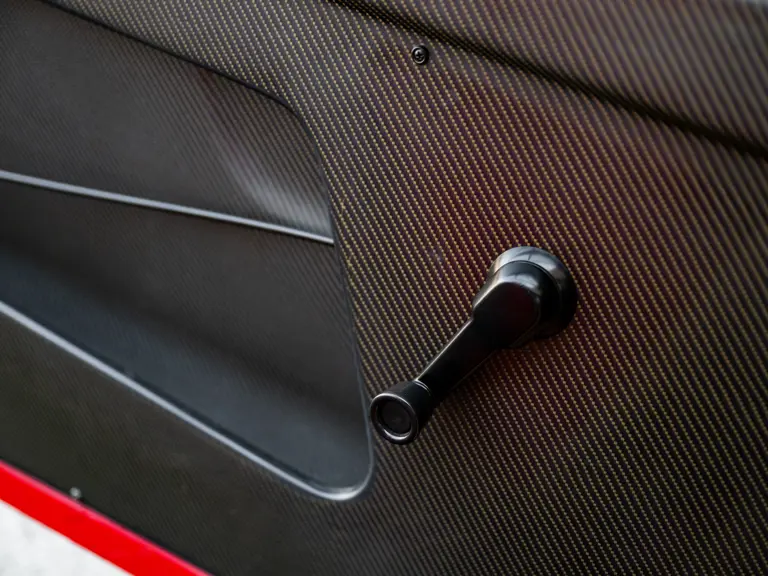
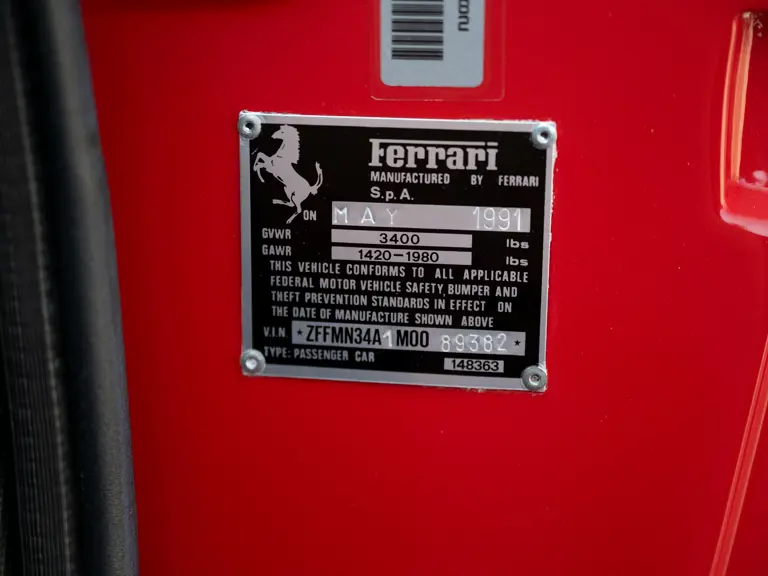
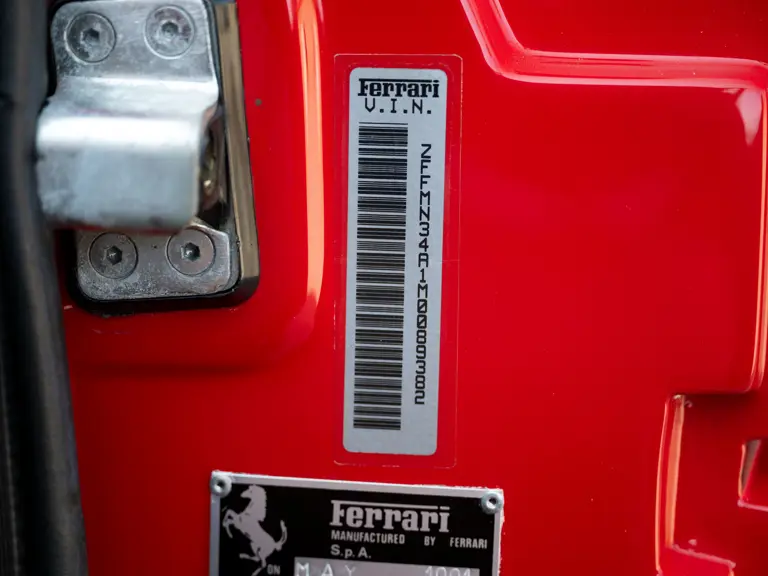
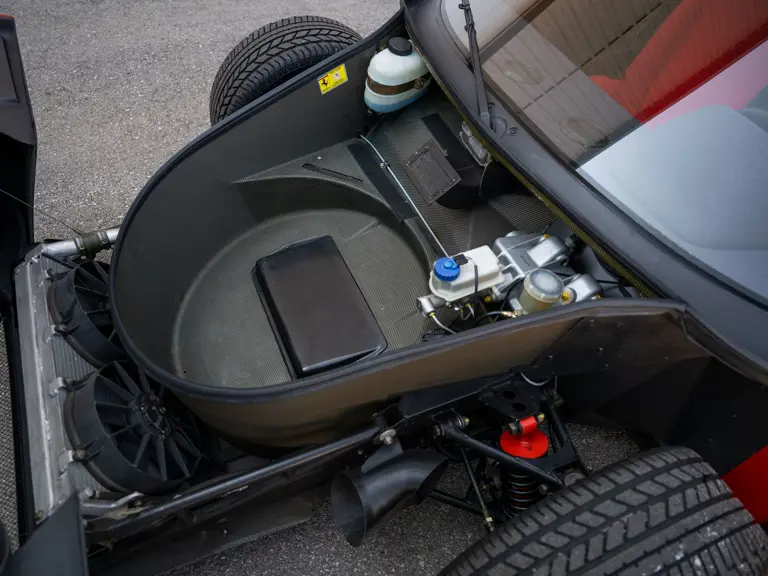
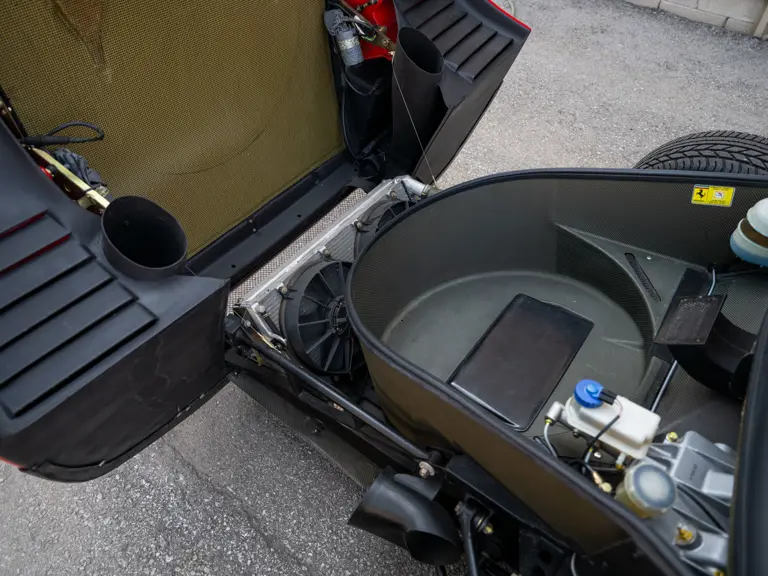
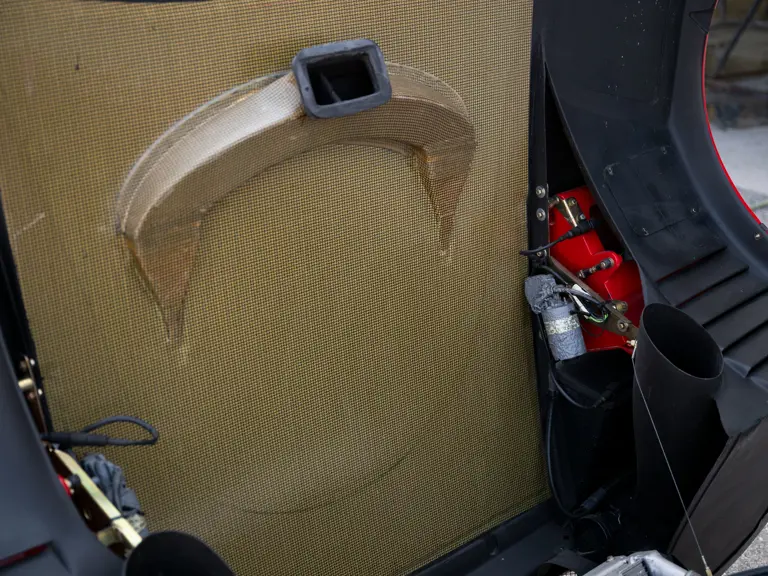

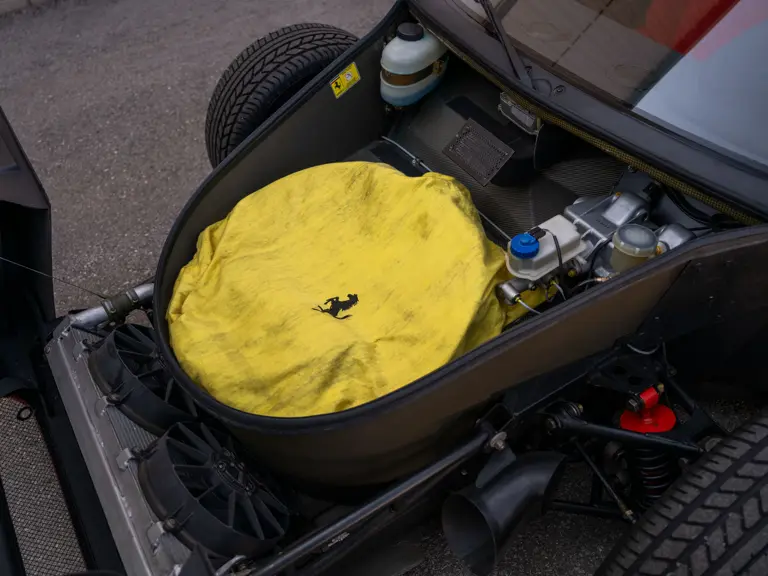
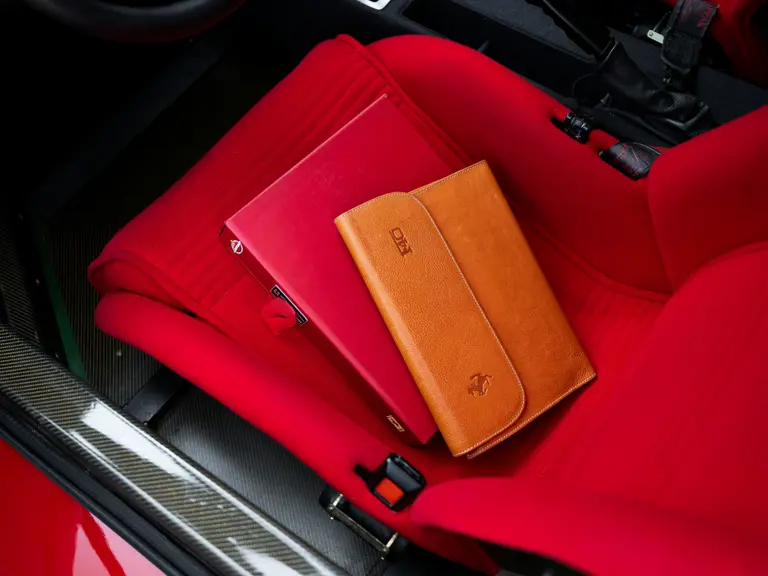
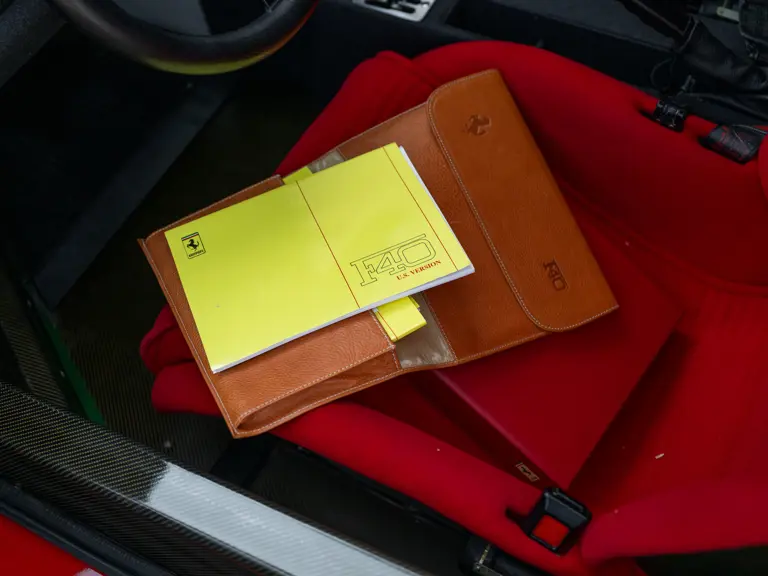
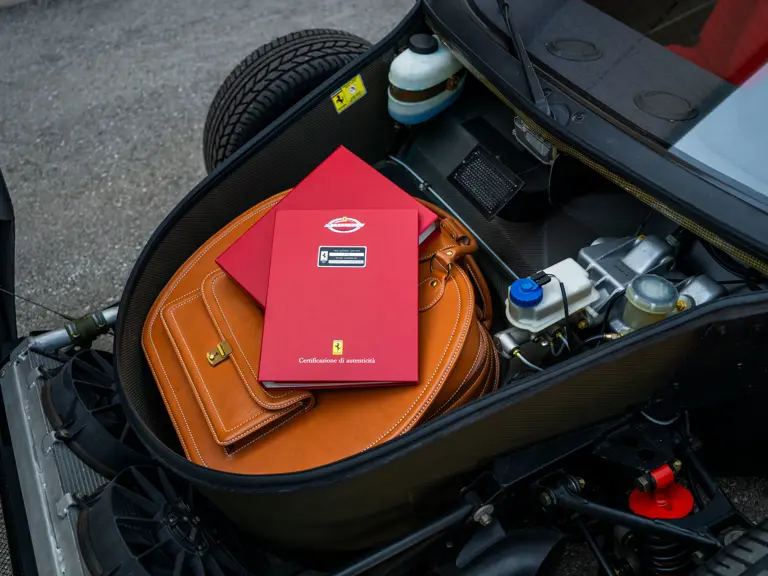
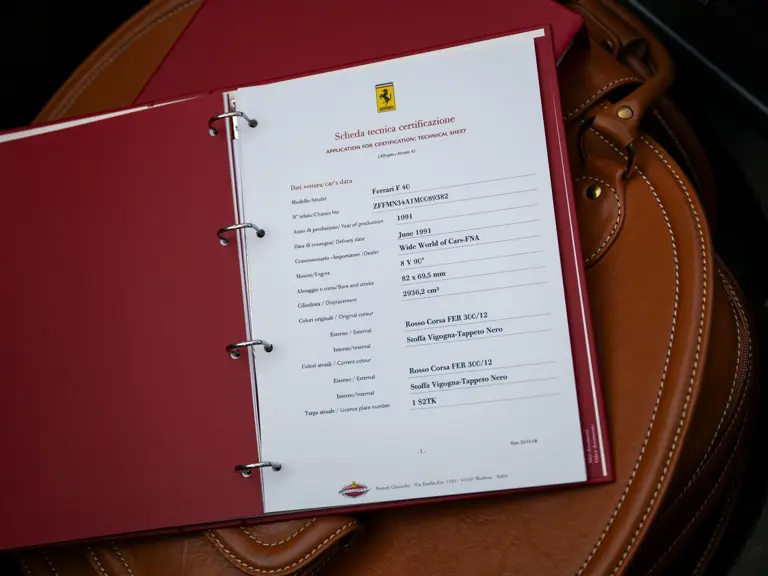
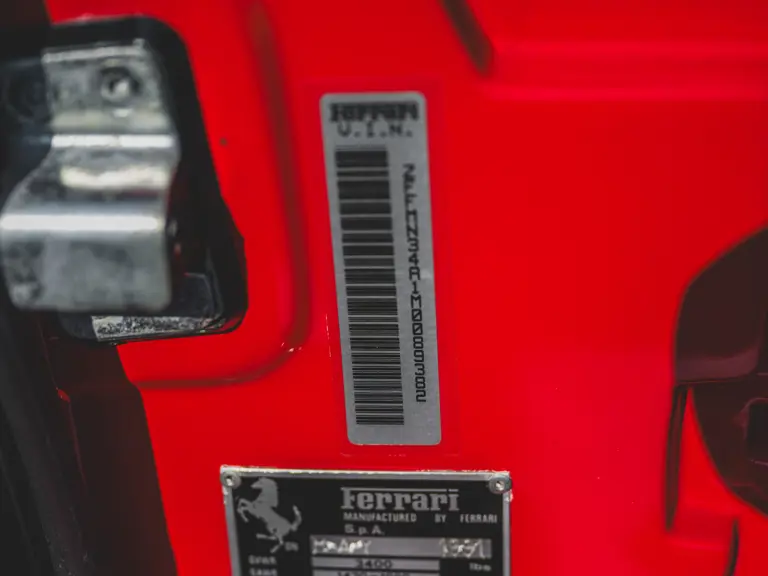
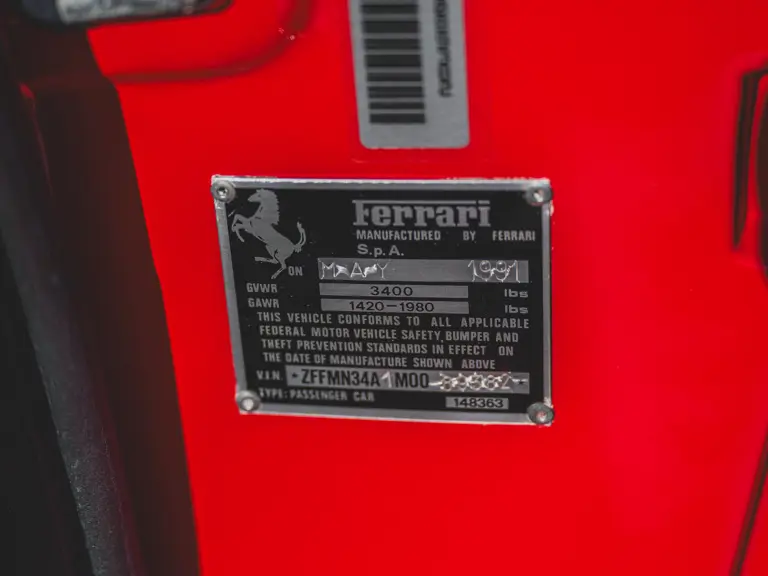
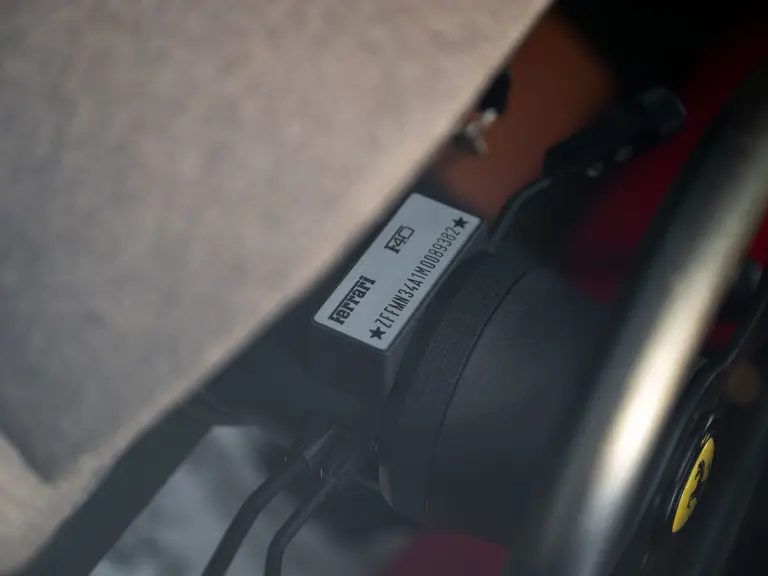
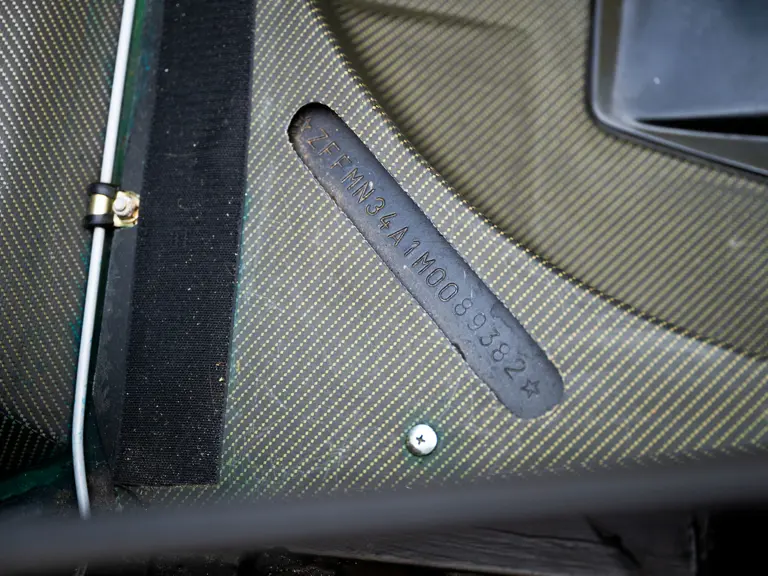
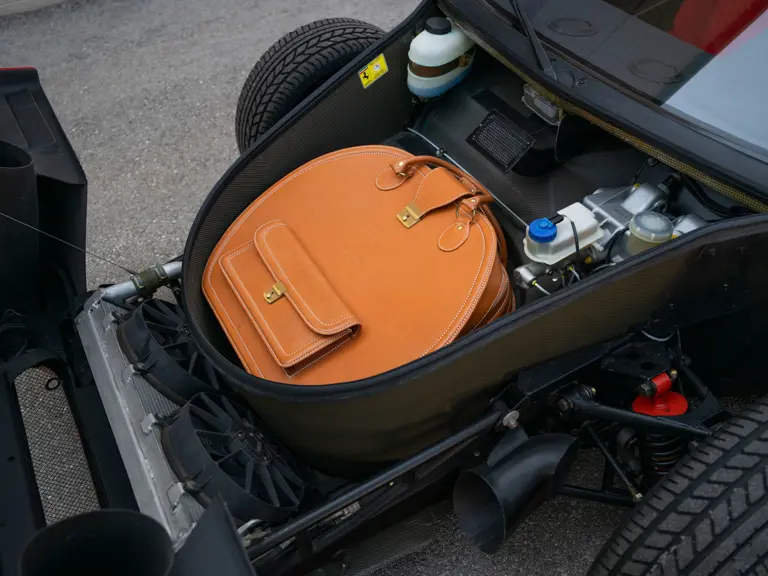
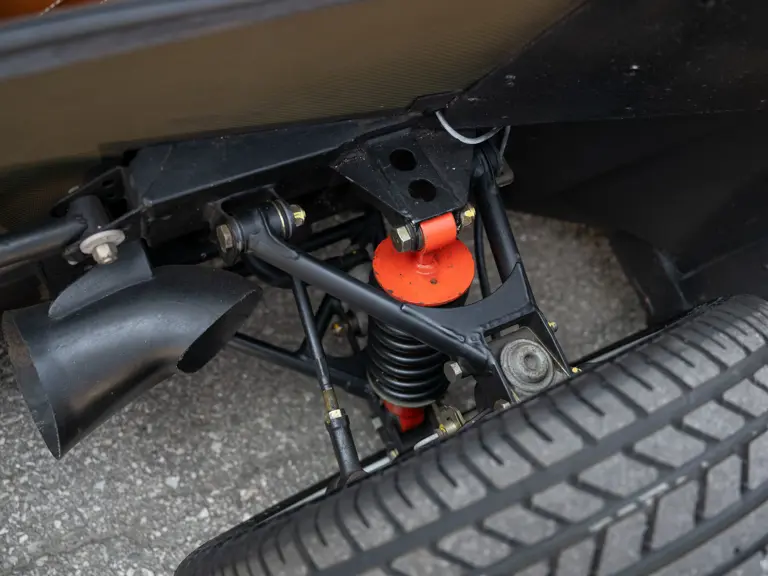
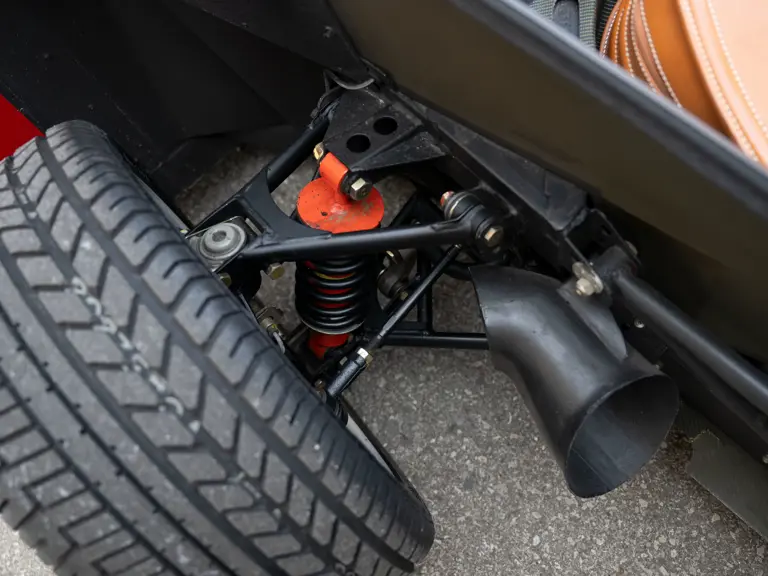
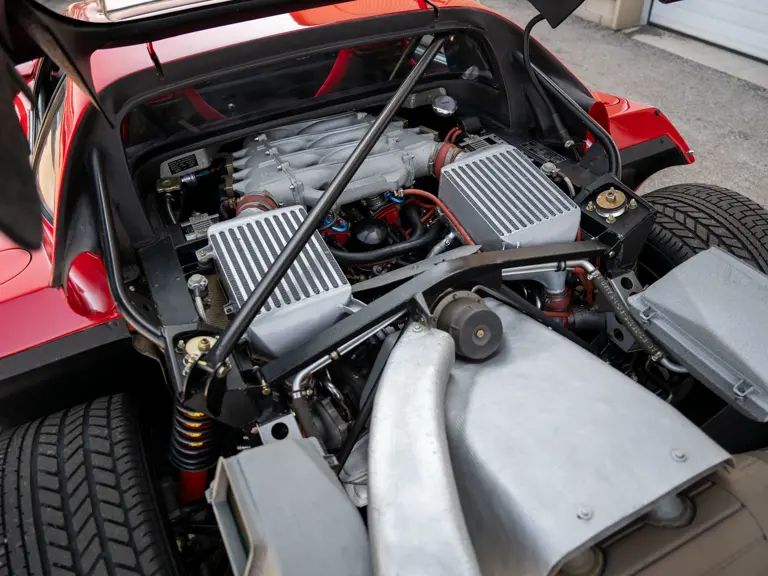
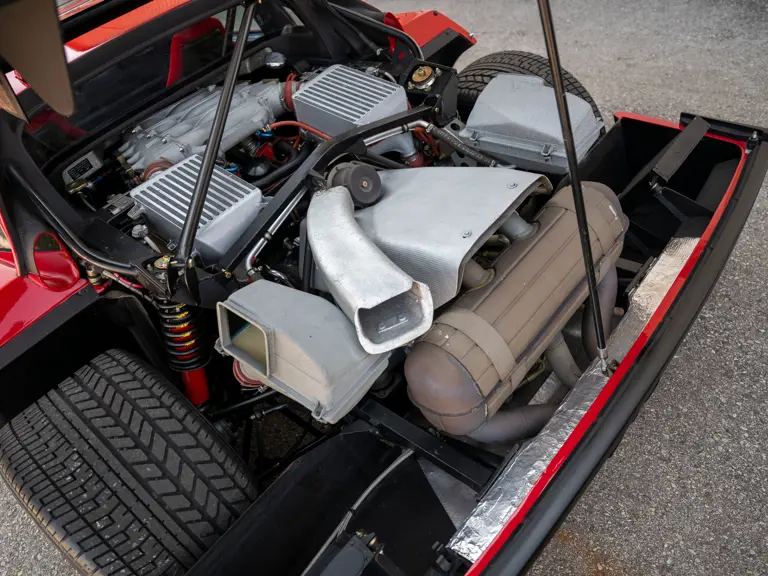
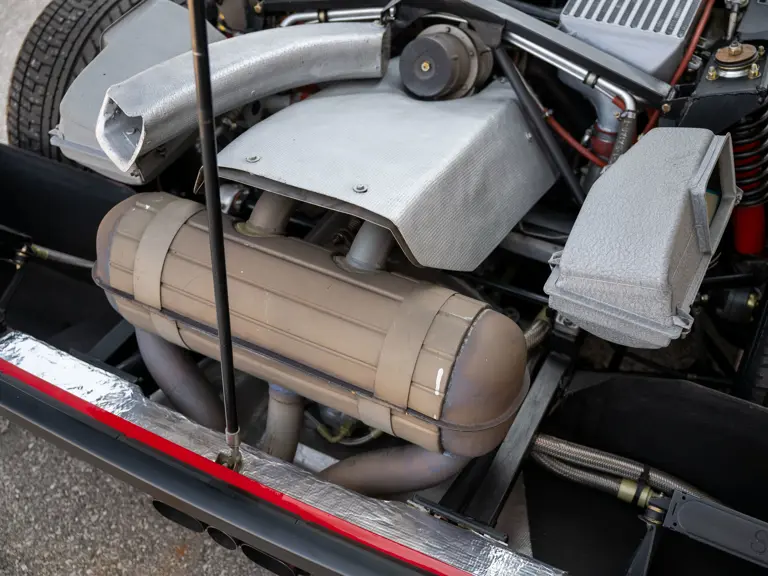
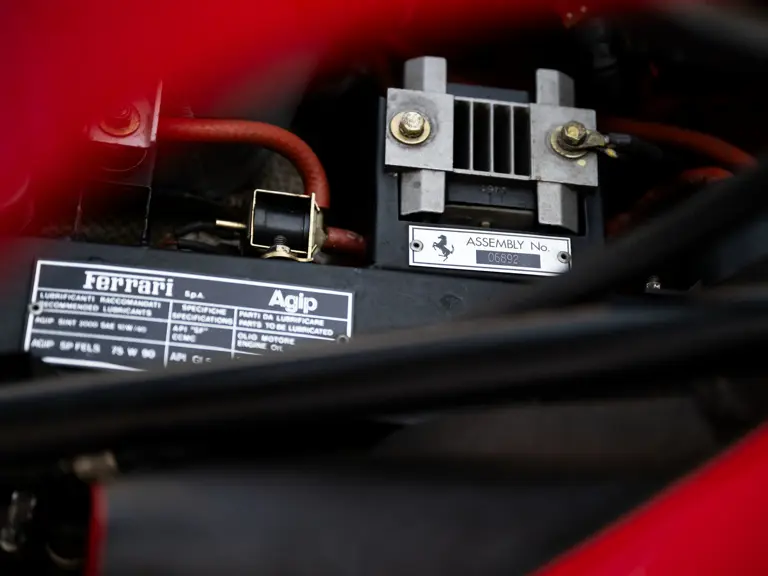
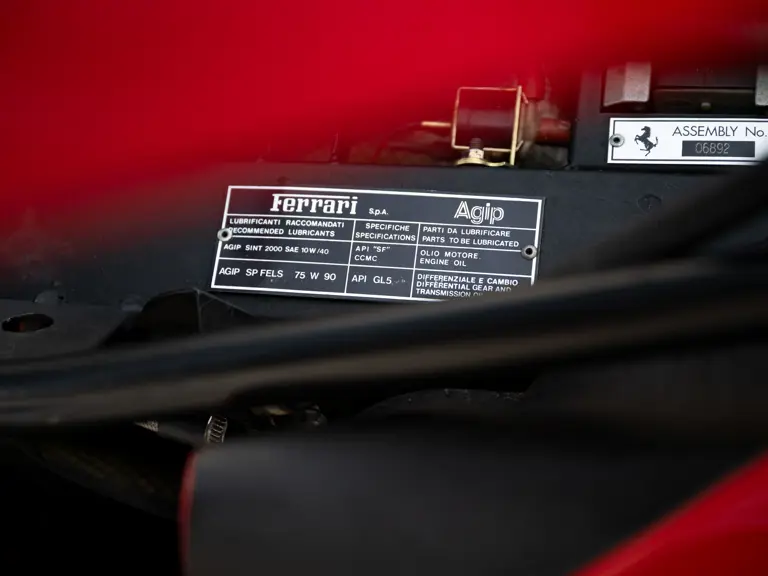


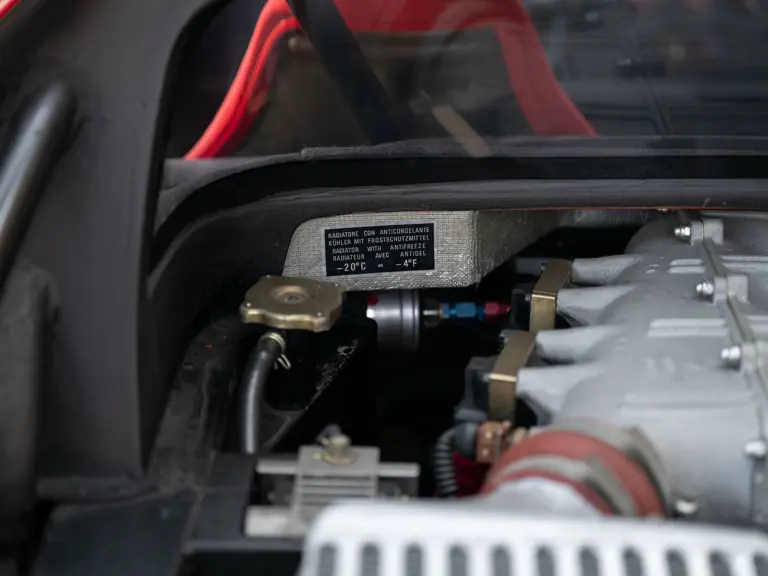
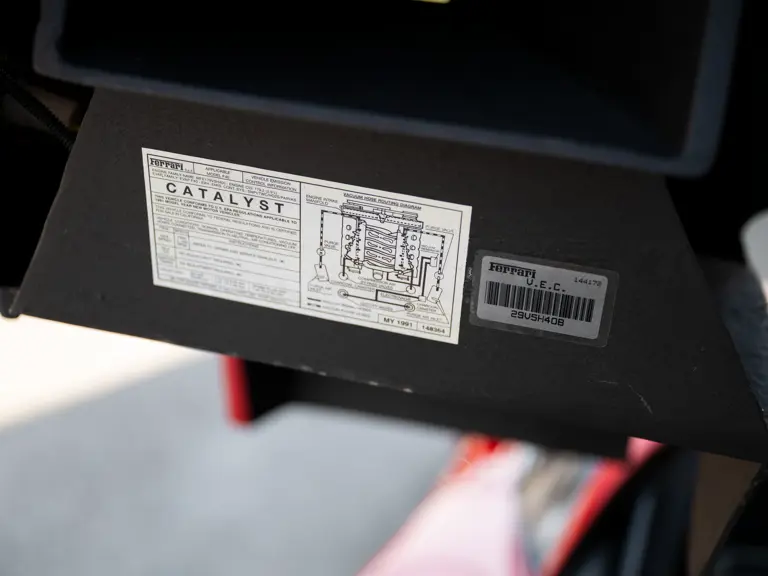
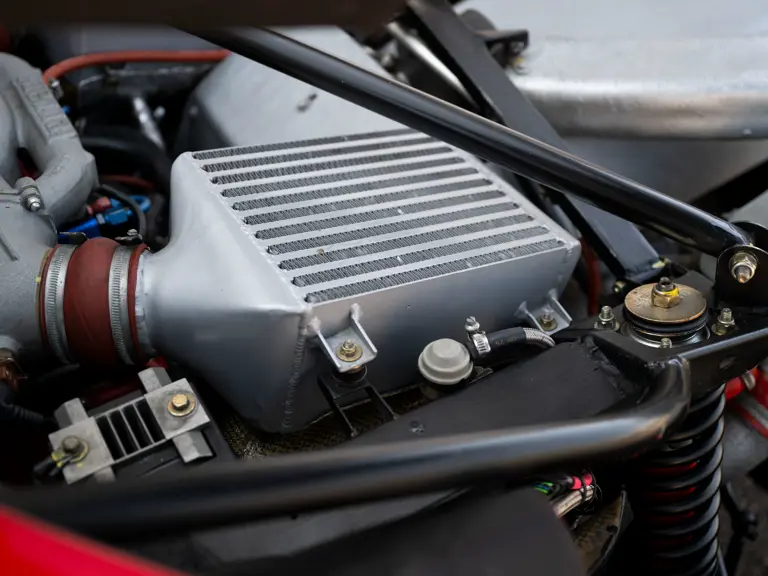
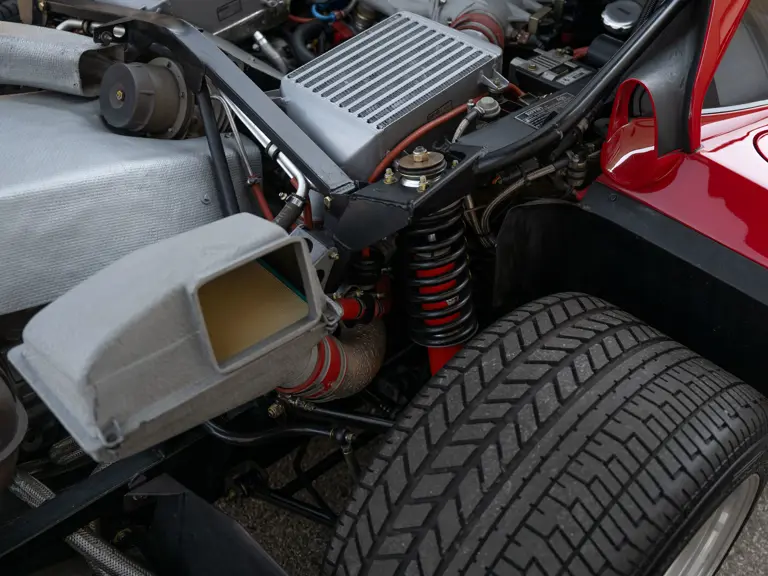
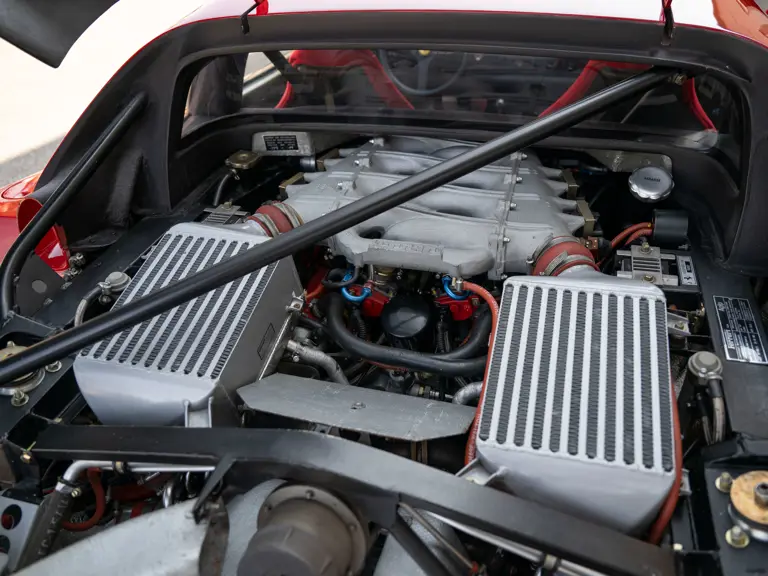
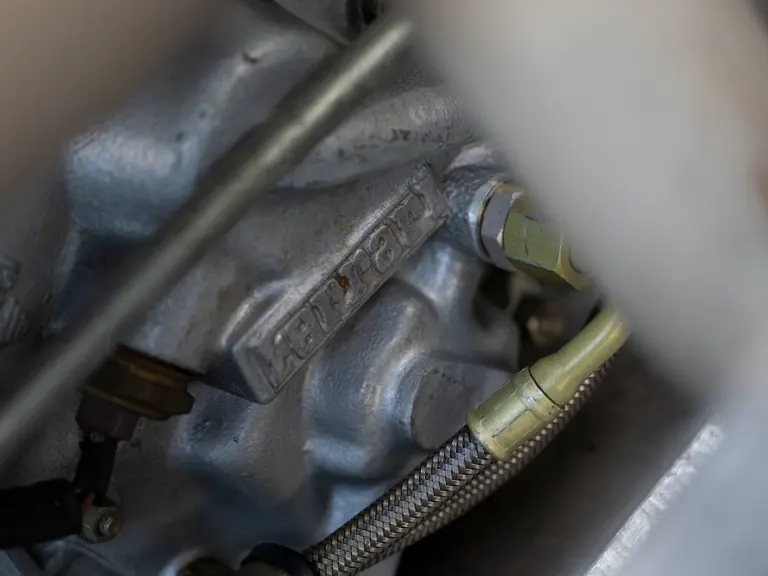
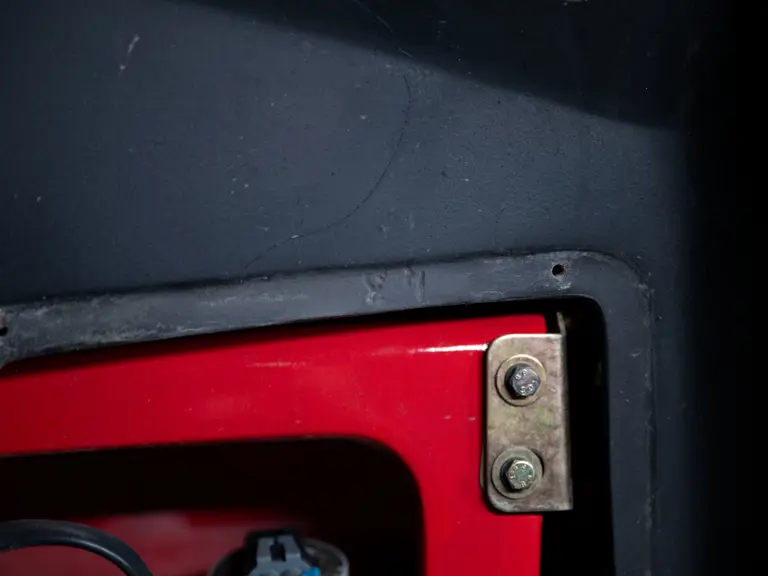
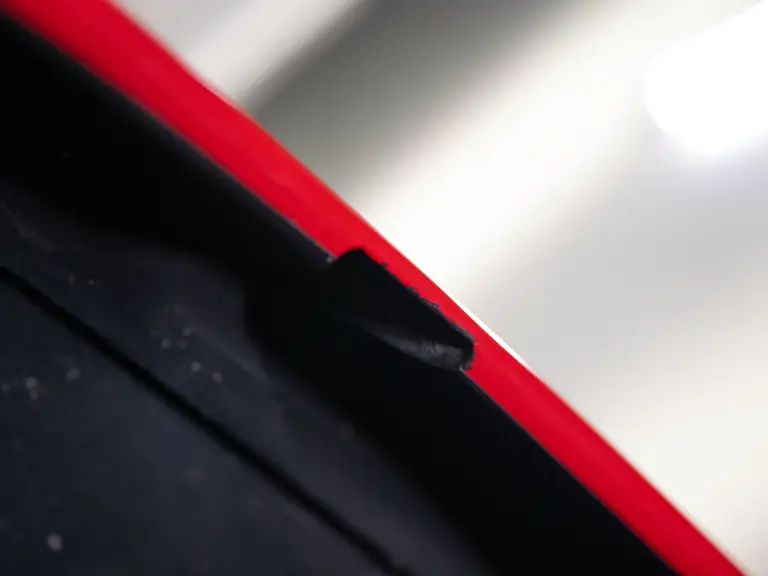
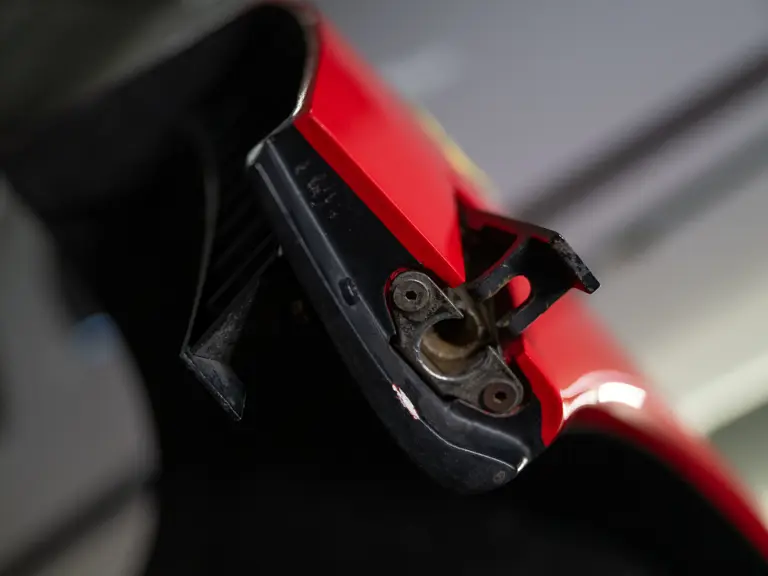
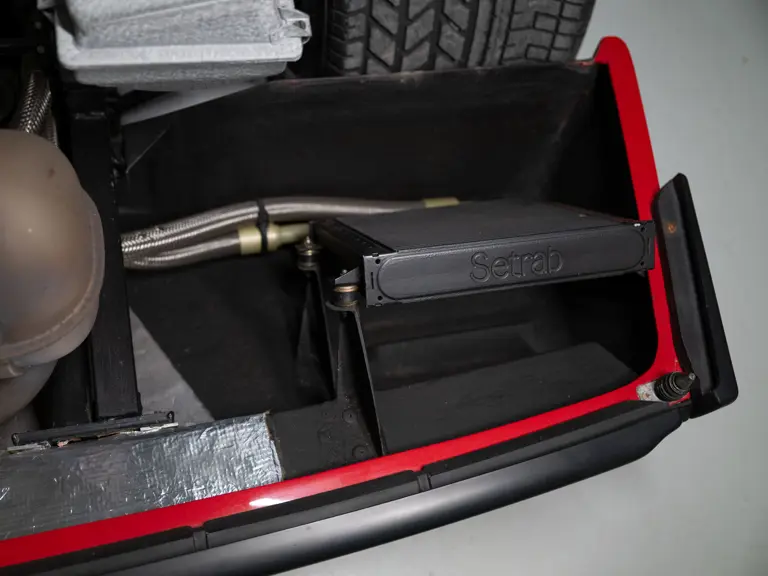

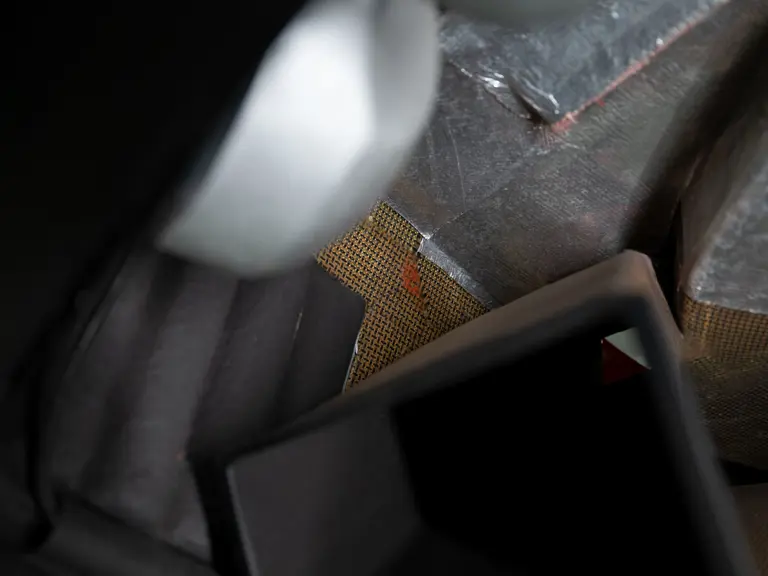
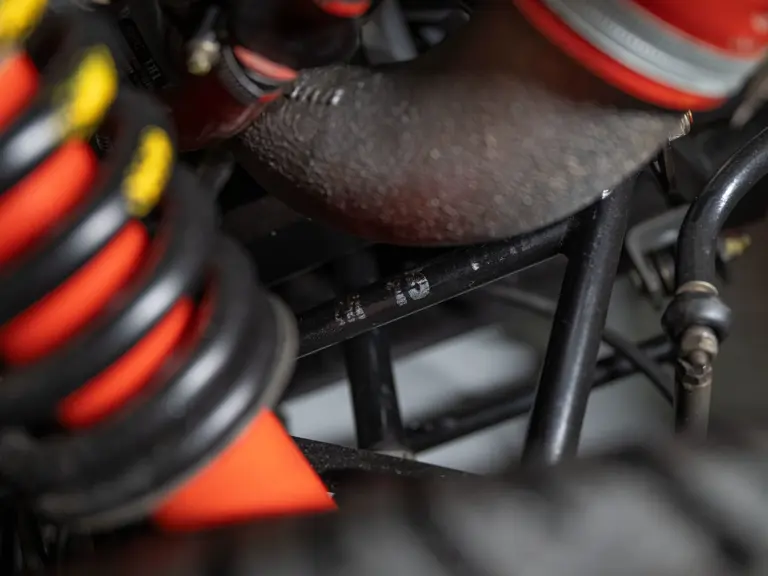
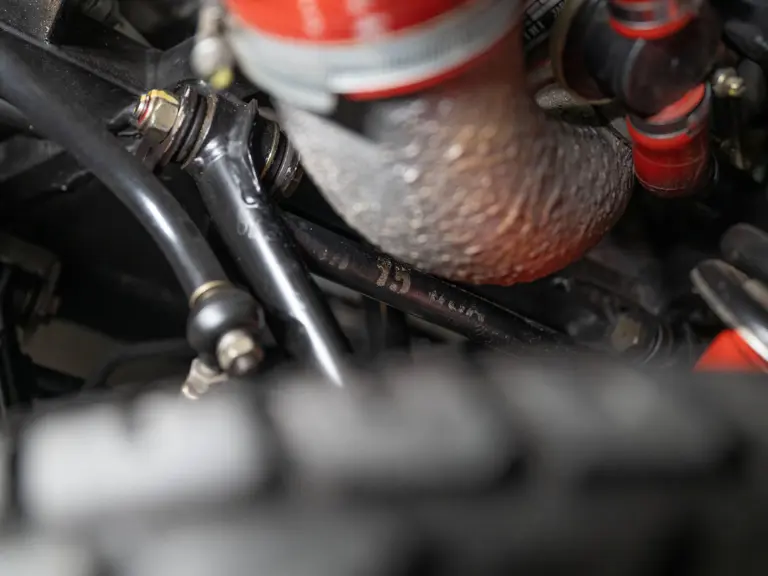
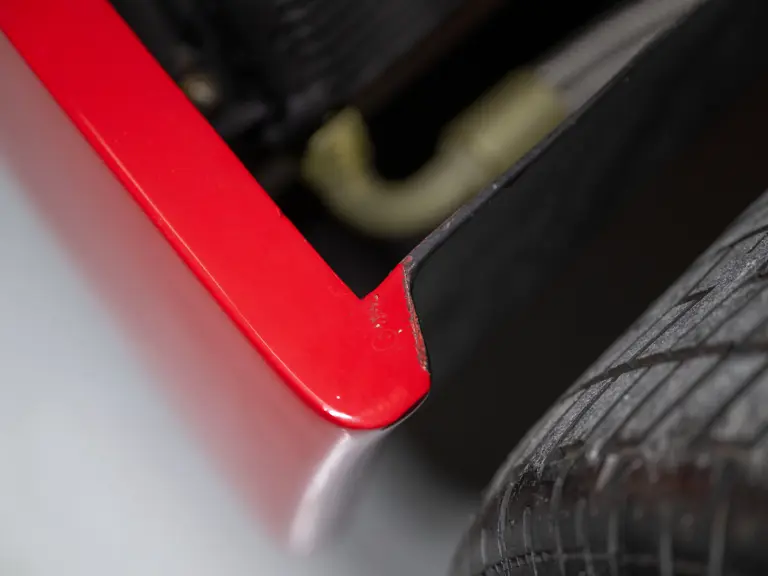
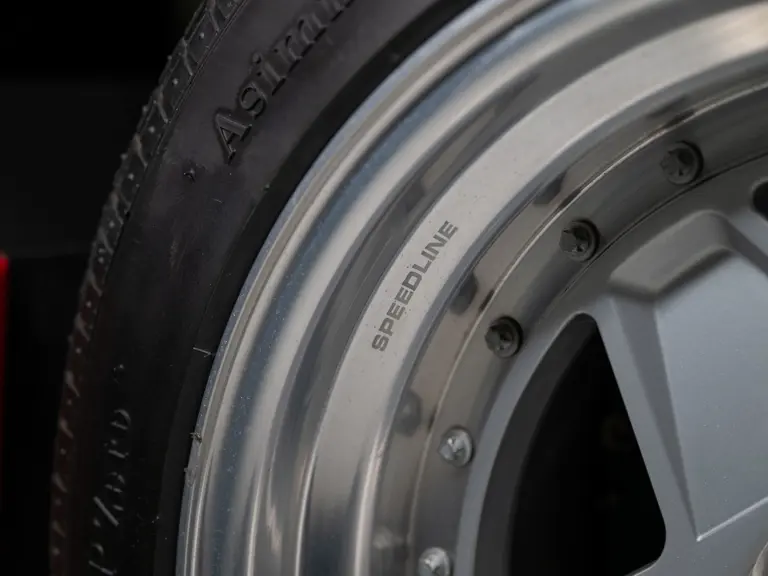
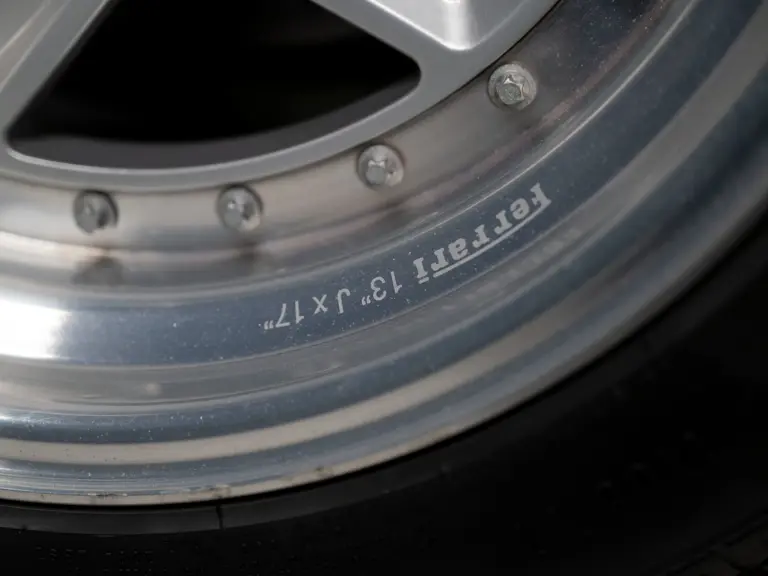
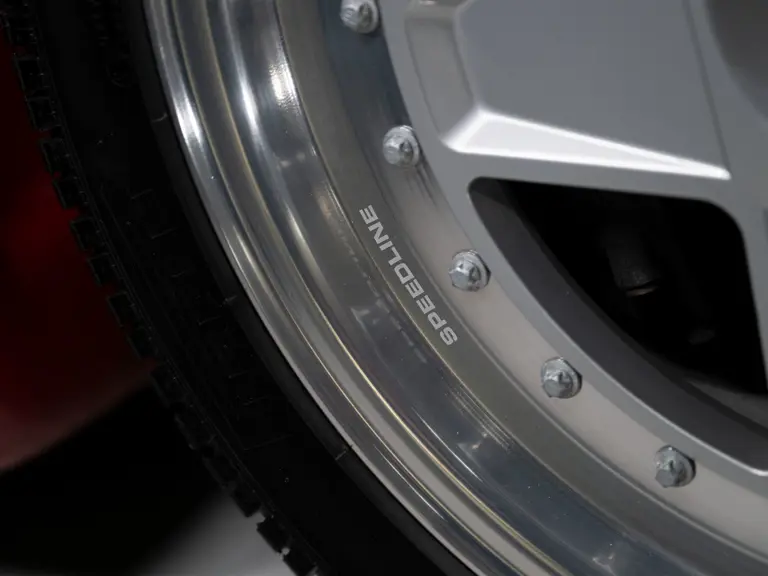
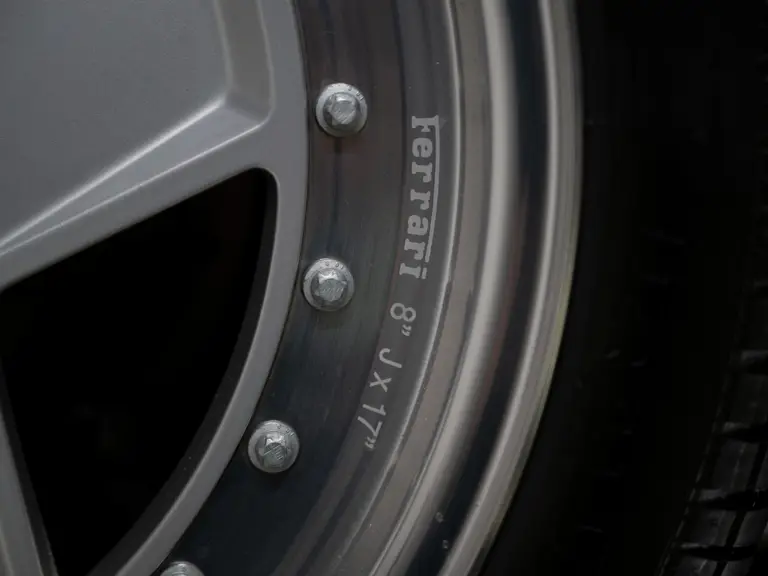
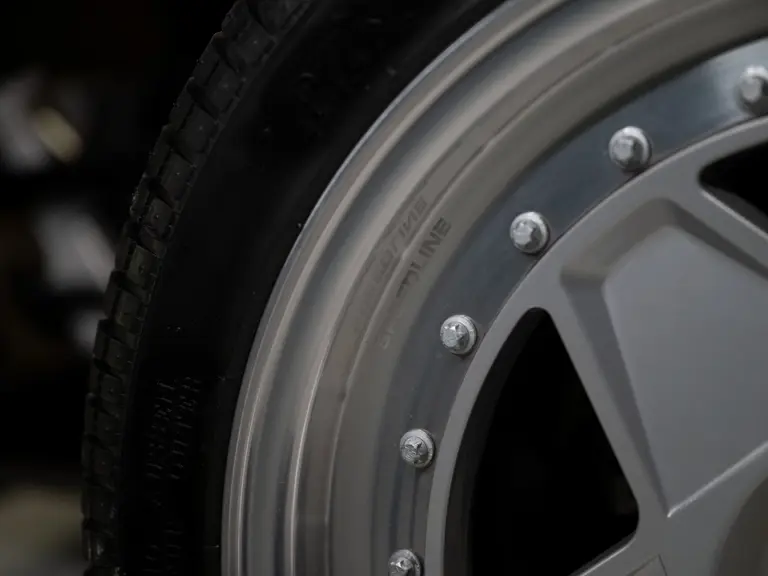
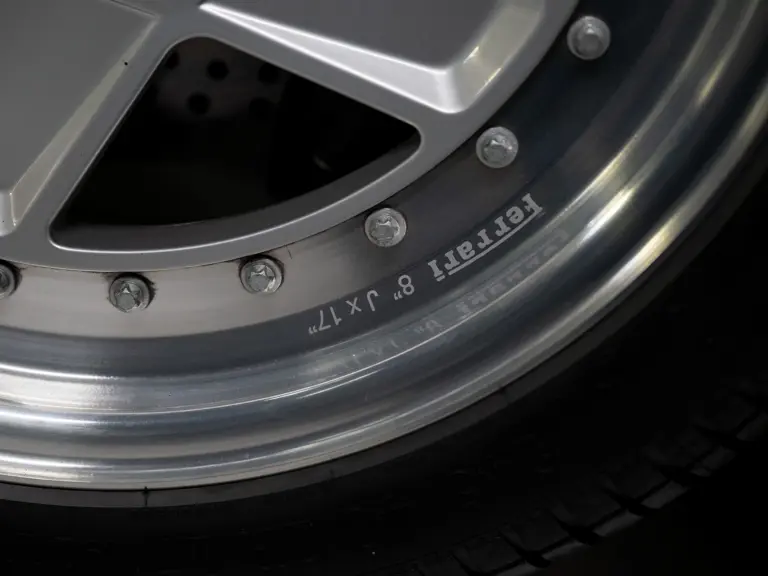
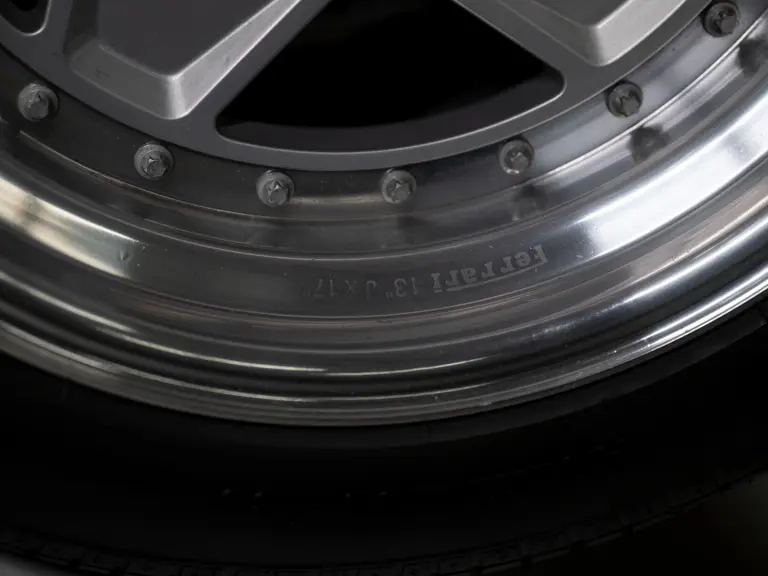
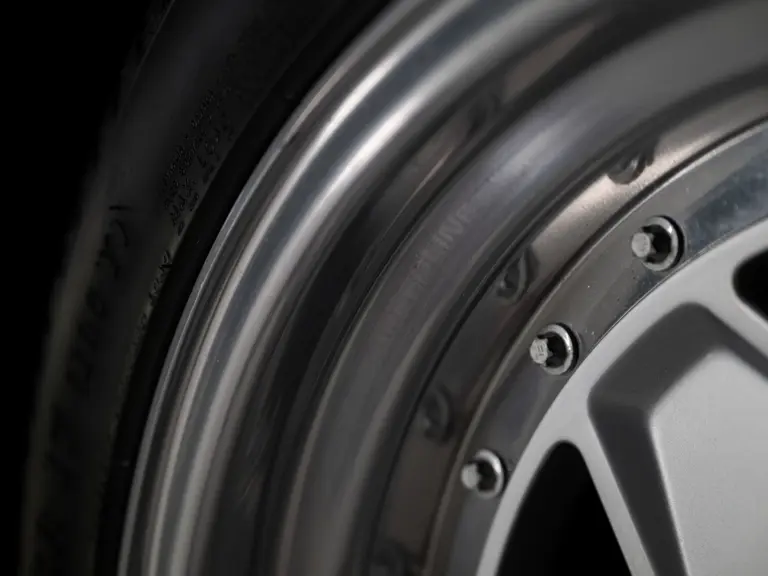

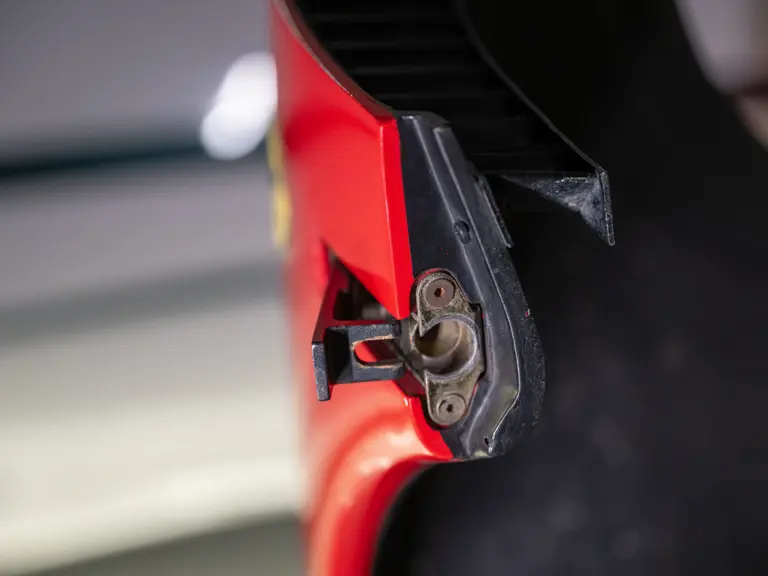
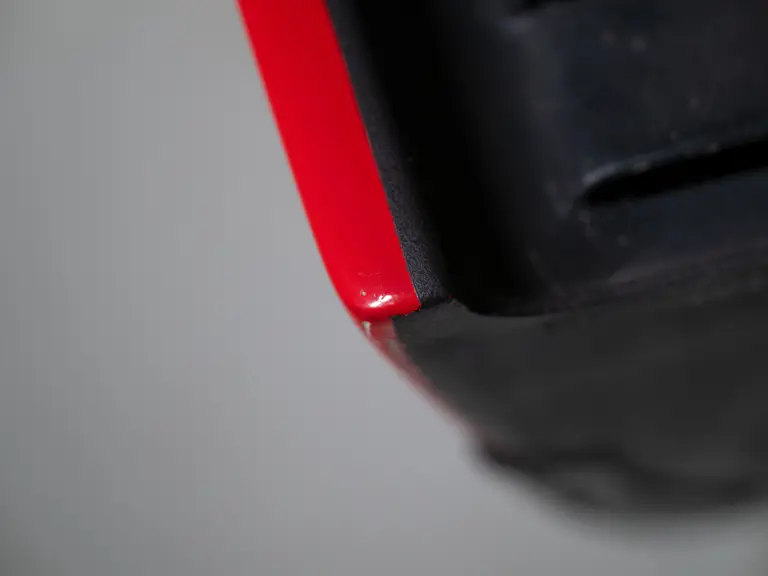
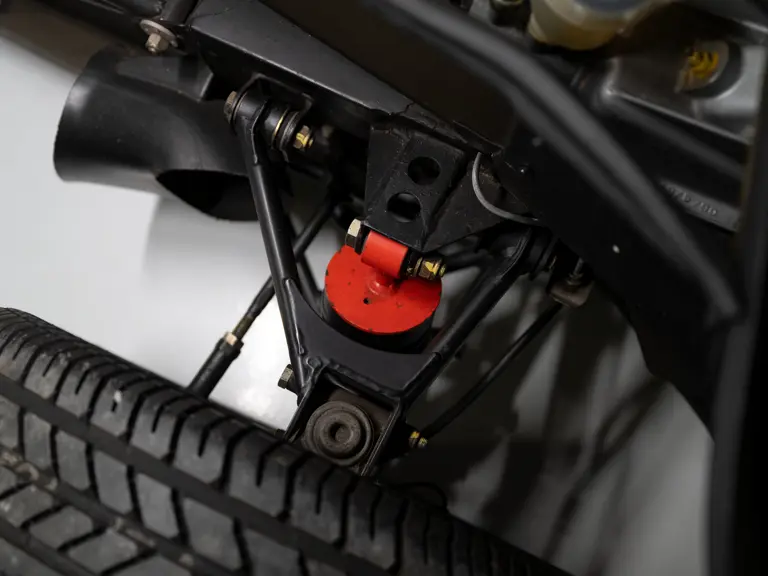
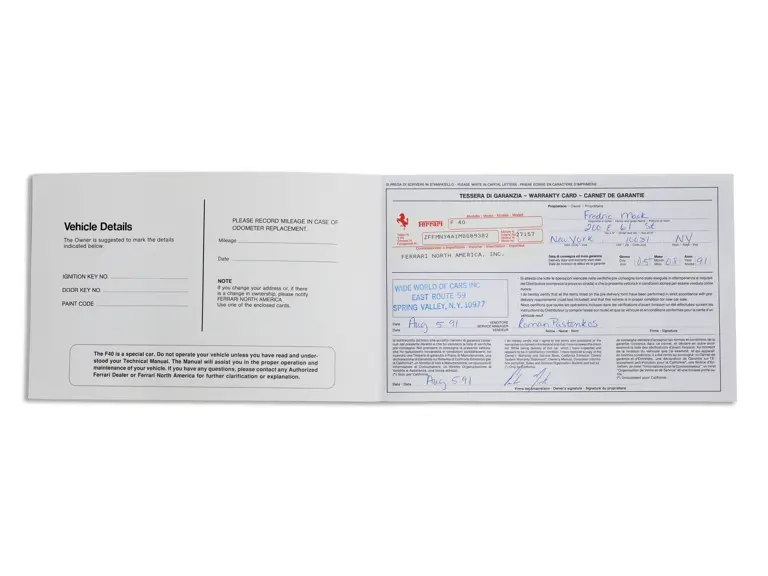
 | Coral Gables, Florida
| Coral Gables, Florida
